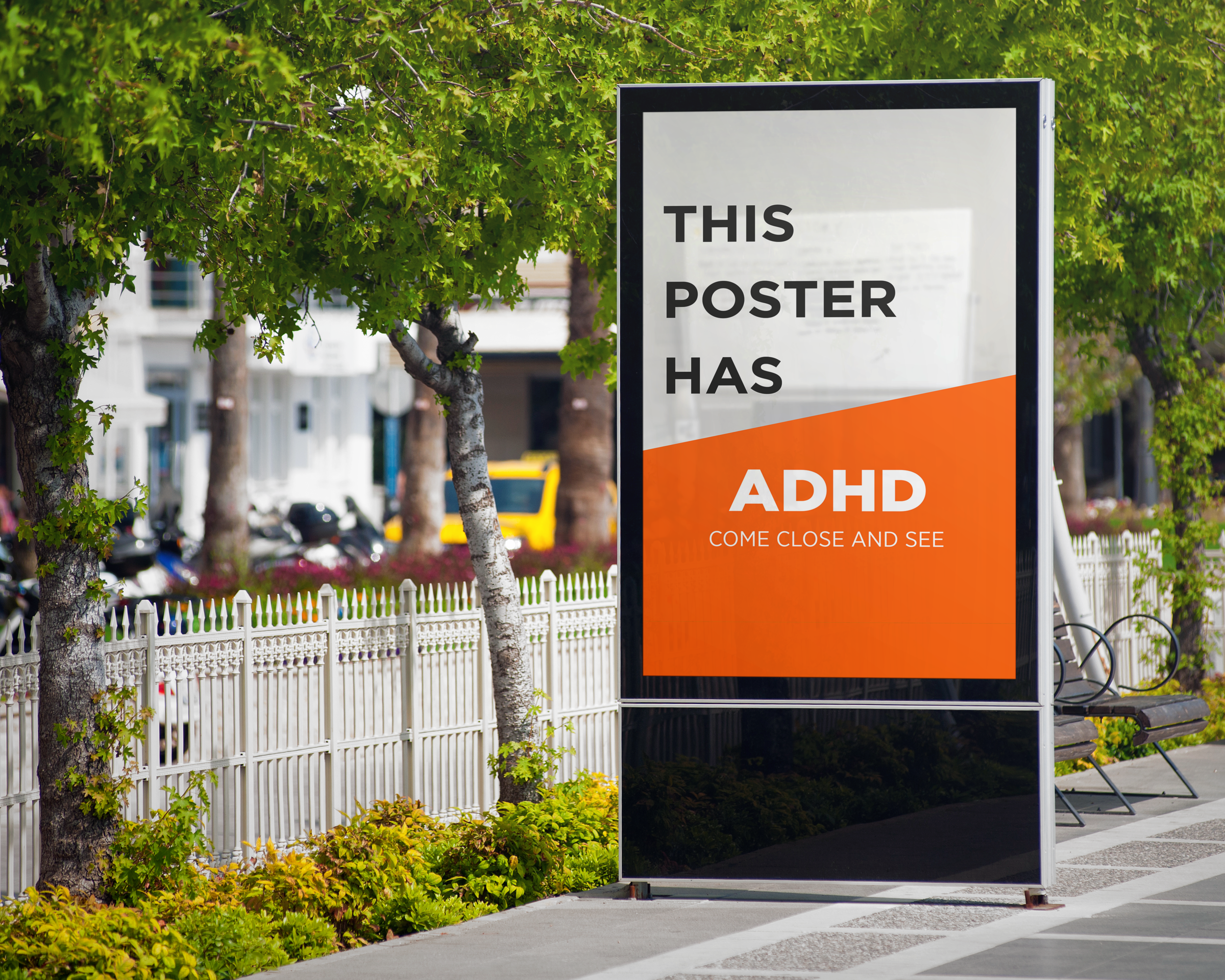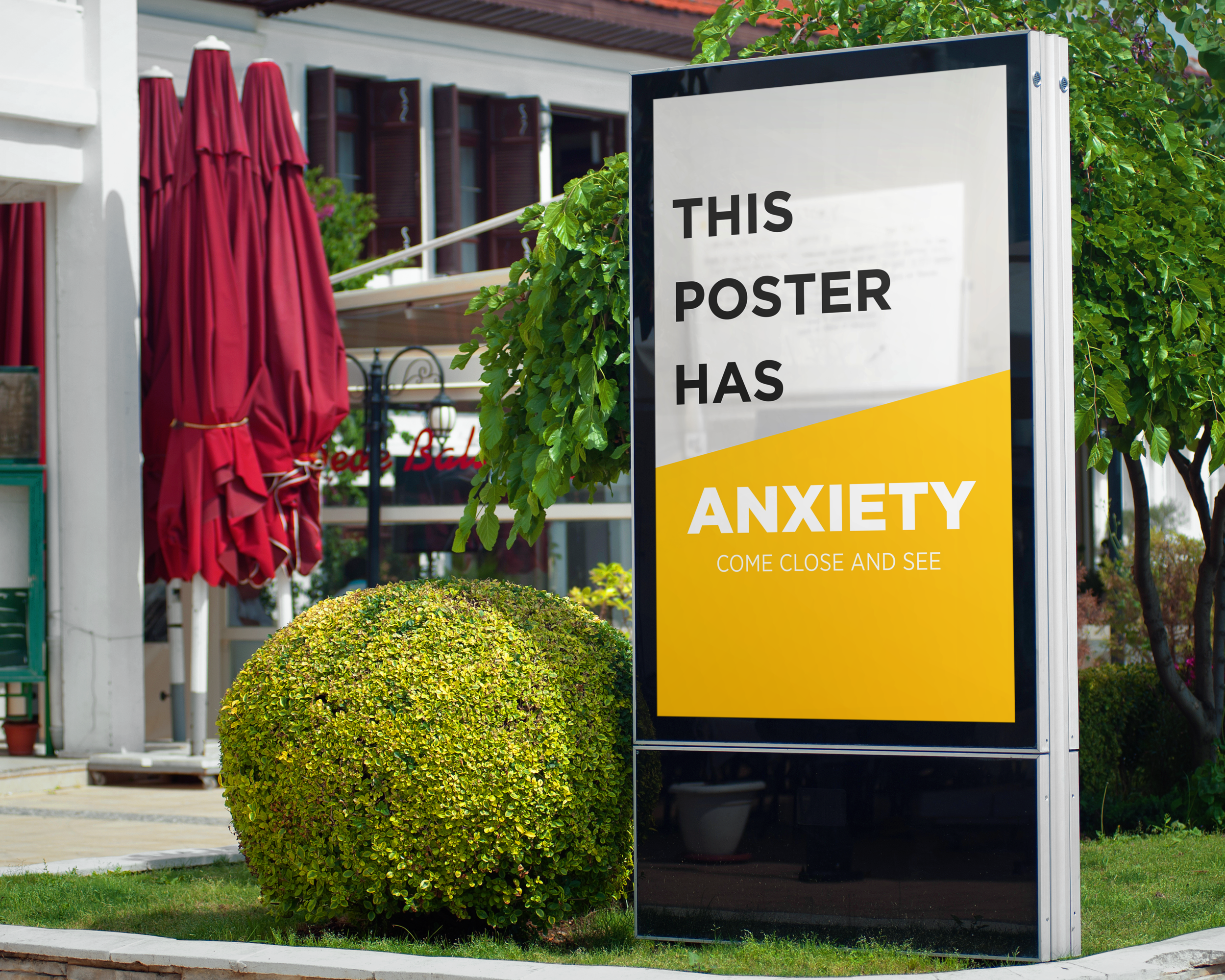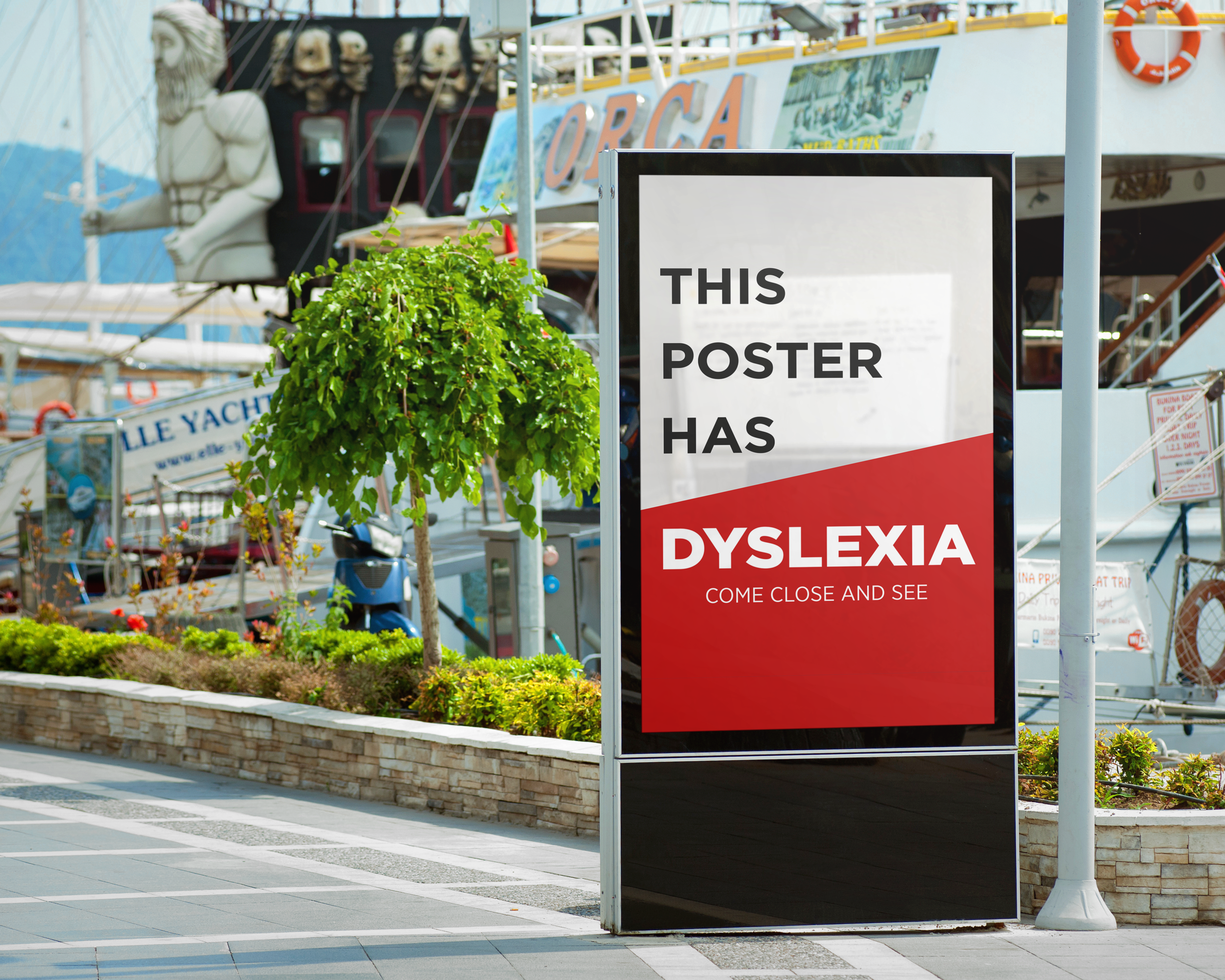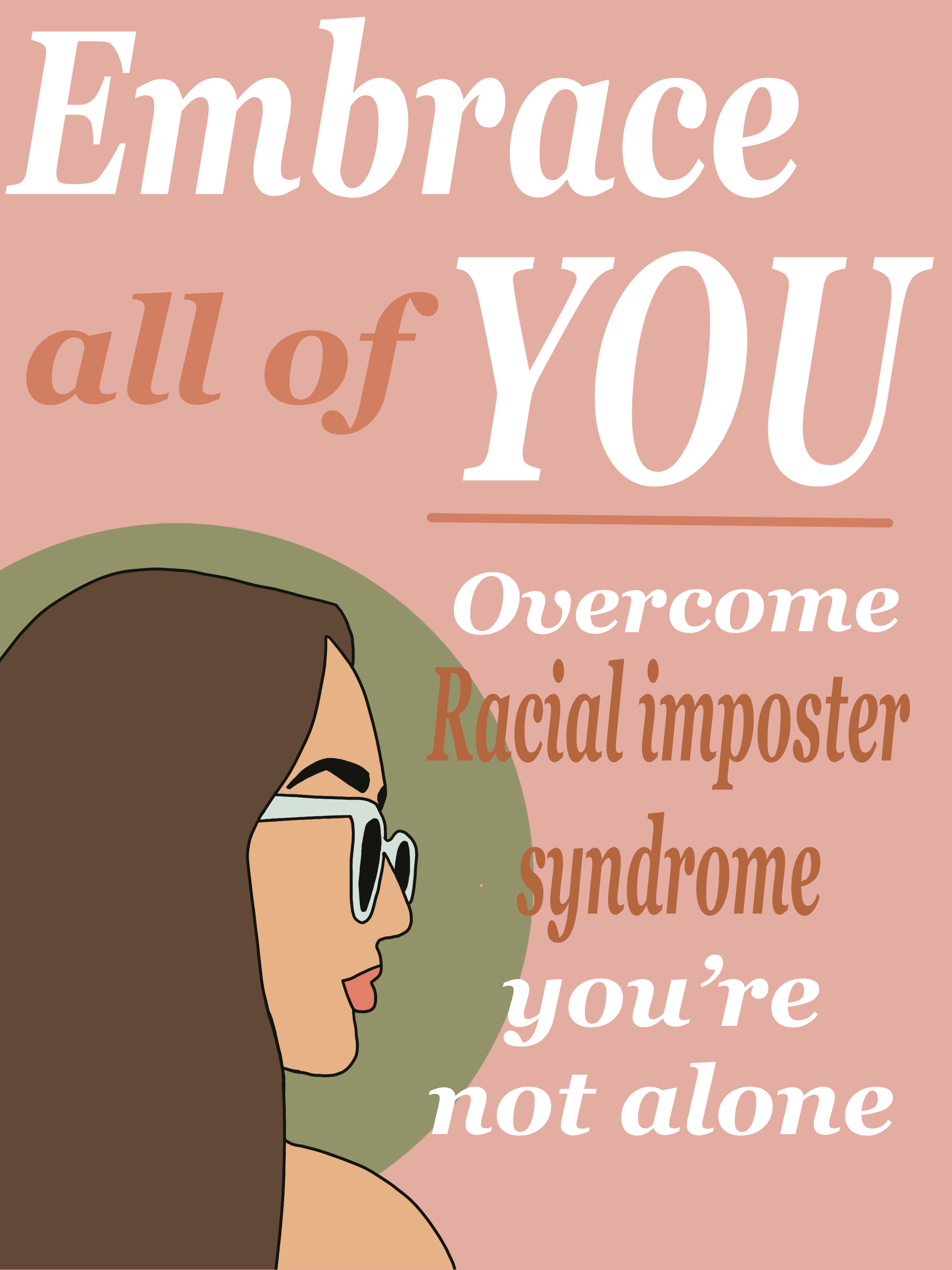SVAD Diversity, Equity and Inclusion Charette Exhibition
The School of Visual Art and Design organized its inaugural Diversity, Equity and Inclusion Charette from February 22 - February 25, 2022. A charette is a days-long period of intense artistic research, production, exhibition, and learning/teaching centered around a specific topic, issue, conflict, or problem. All students involved in SVAD courses were welcome and invited to form groups (even groups of one) to develop artworks, presentation materials, exhibitions, and/or other work which pertains to one of the charette topics. Scroll down to view each group’s final project.
The charette was supported by a grant from the DEI Pilot Grant Program of the College of Arts and Sciences.
For more information and the complete list of charette topics, please visit the SVAD Diversity, Equity and Inclusion Charette webpage.
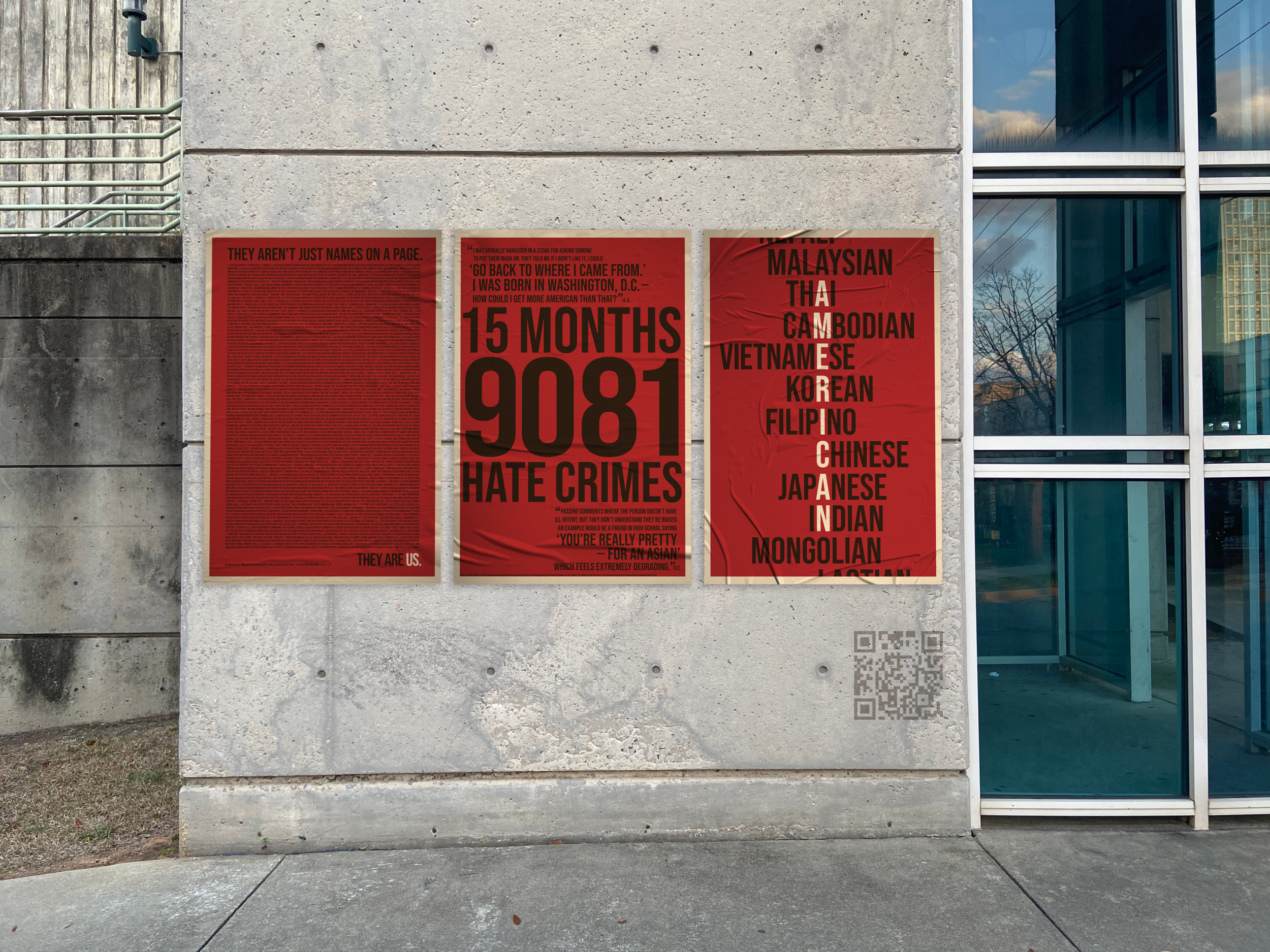
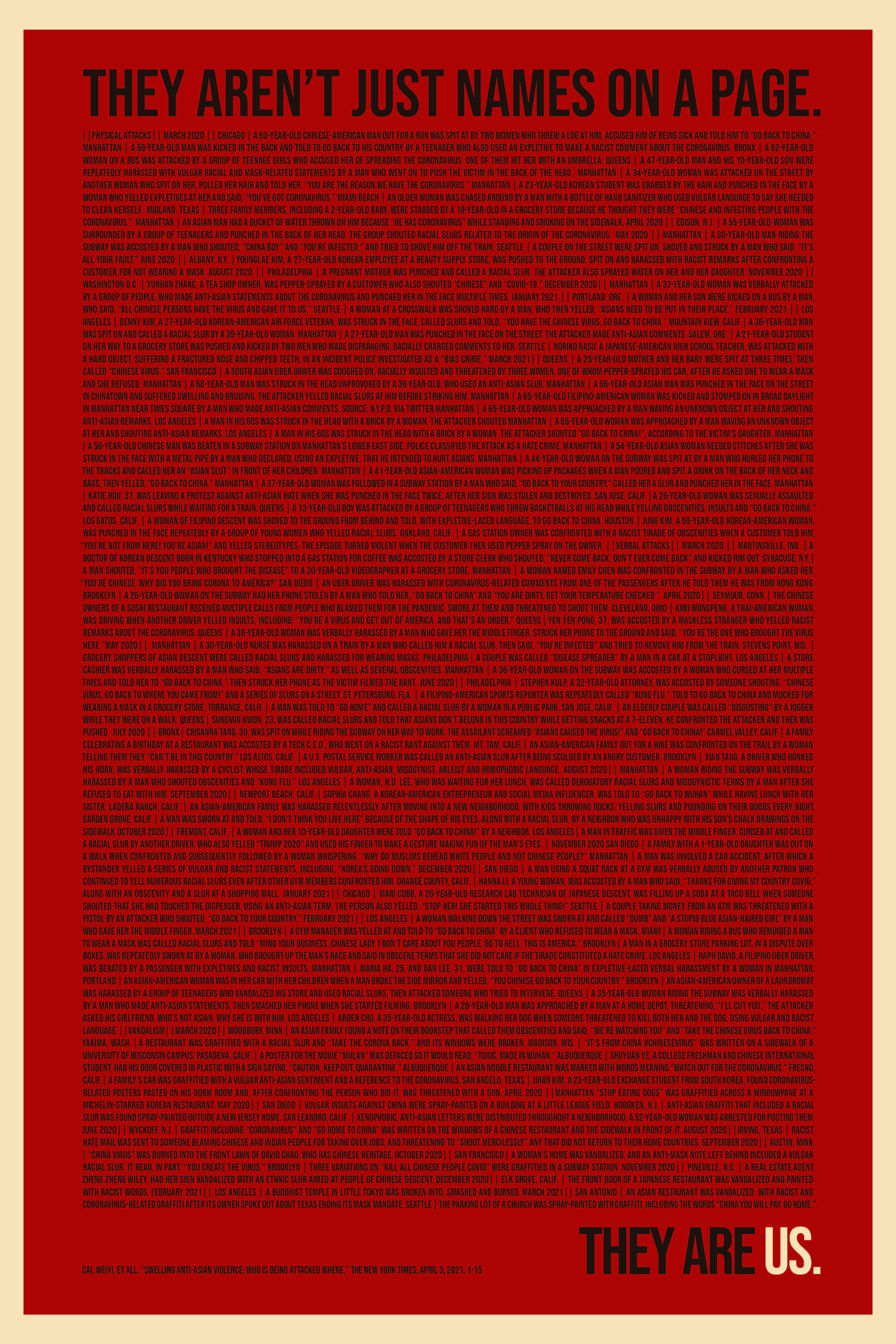
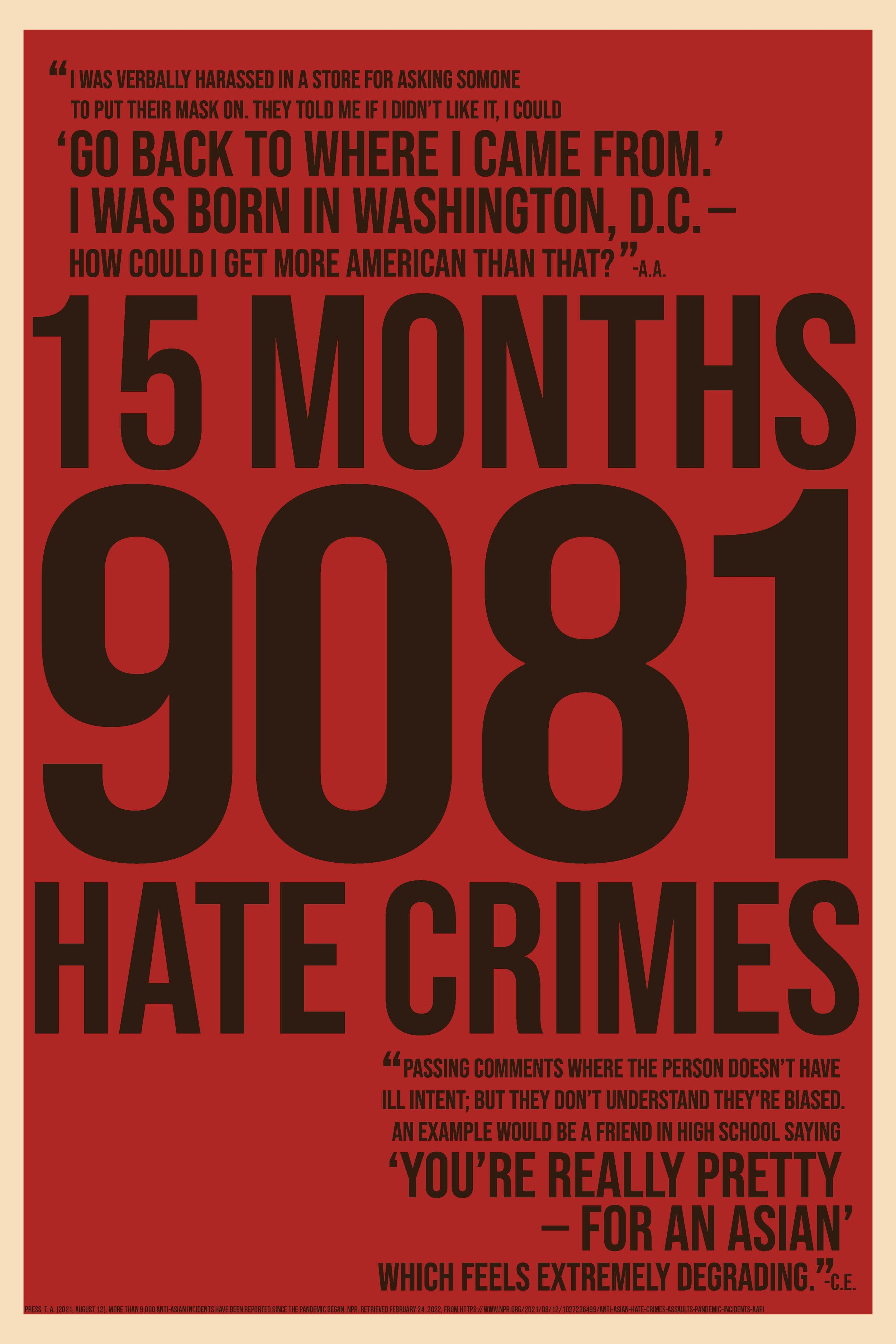
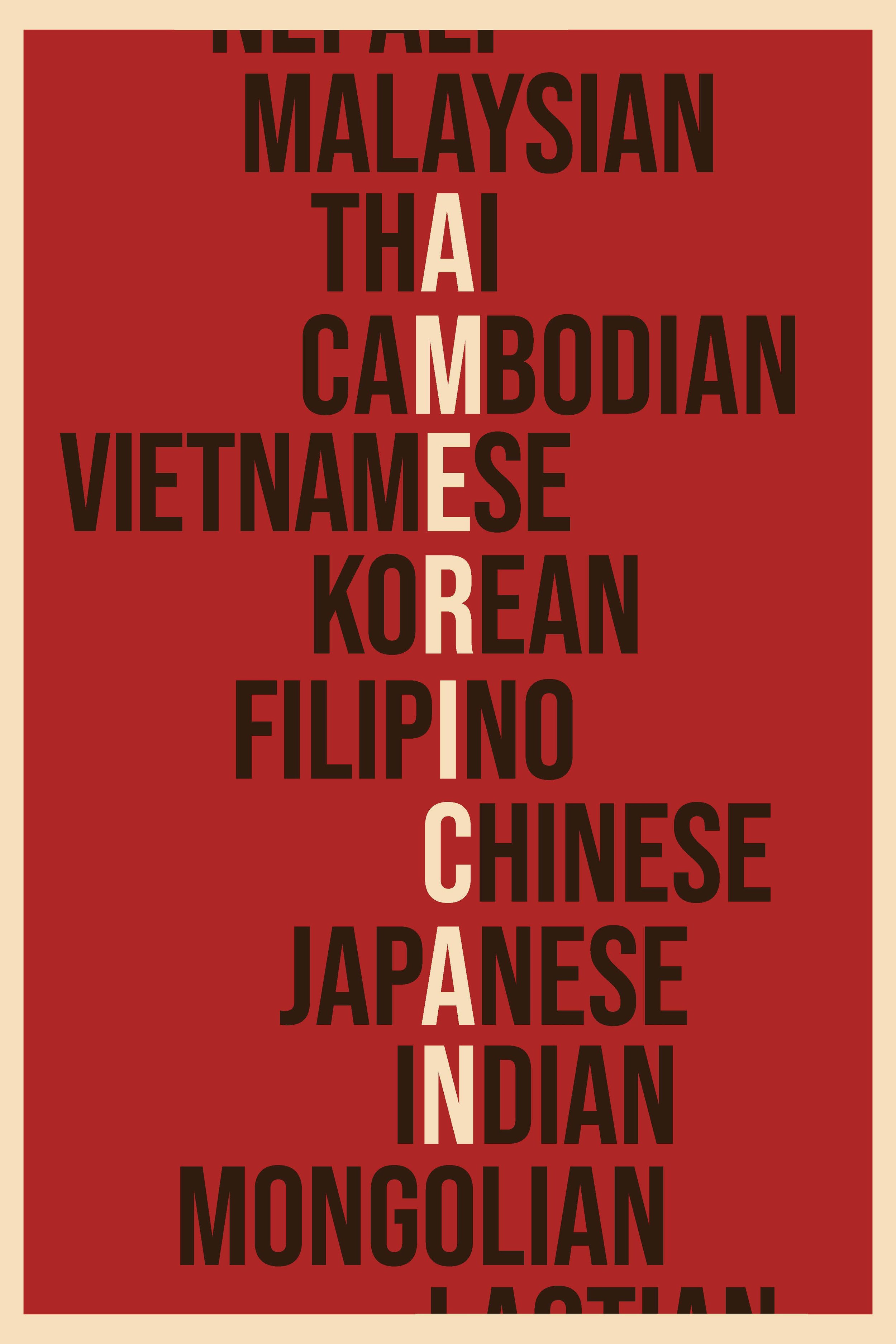
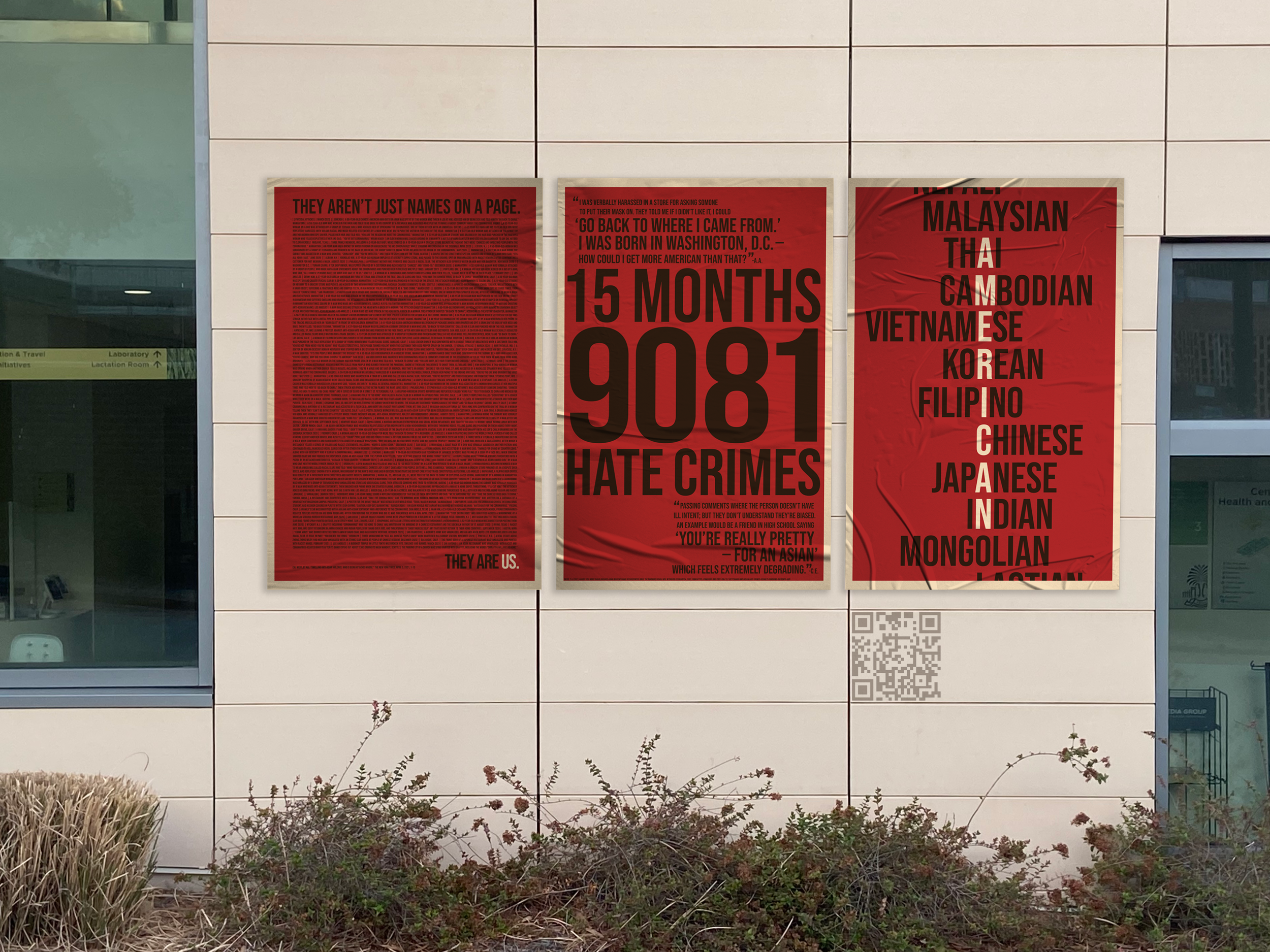
Us
Liam Owen and Thomas Roznowski
Us is a collection of posters made by Liam Owen and Thomas Roznowski in order to highlight the issues facing the AAPI and Asian communities in America today. With the surge in violence against Asian people following coronavirus lockdowns, we felt that it was more important than ever to highlight how our fellow Americans (or even more simply, fellow humans) have been being treated in its wake. The title, “Us” is a double entendre, referring to both the word meaning a group of people; as well as the United States (or the US), where many of these crimes/acts of hatred are being committed. We have taken careful care to consult every Asian person we know personally, news sites such as NPR and The New York Times, and Asian advocacy centers such as the MOCA in order to ensure that our tone, subject matter, and deliverables are all as informative and powerful in delivering our message as possible.
Because our focus with these posters is education, we included a QR code in order to highlight AAPI resources that a viewer can use to educate themselves or others; as well as donate to charities representing AAPI issues.
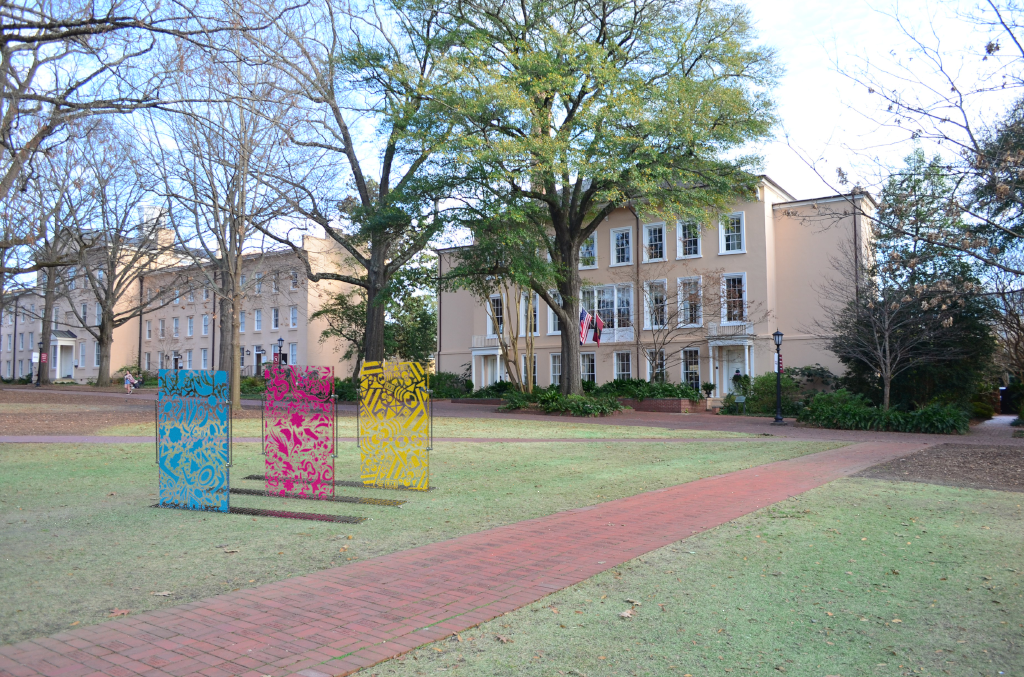
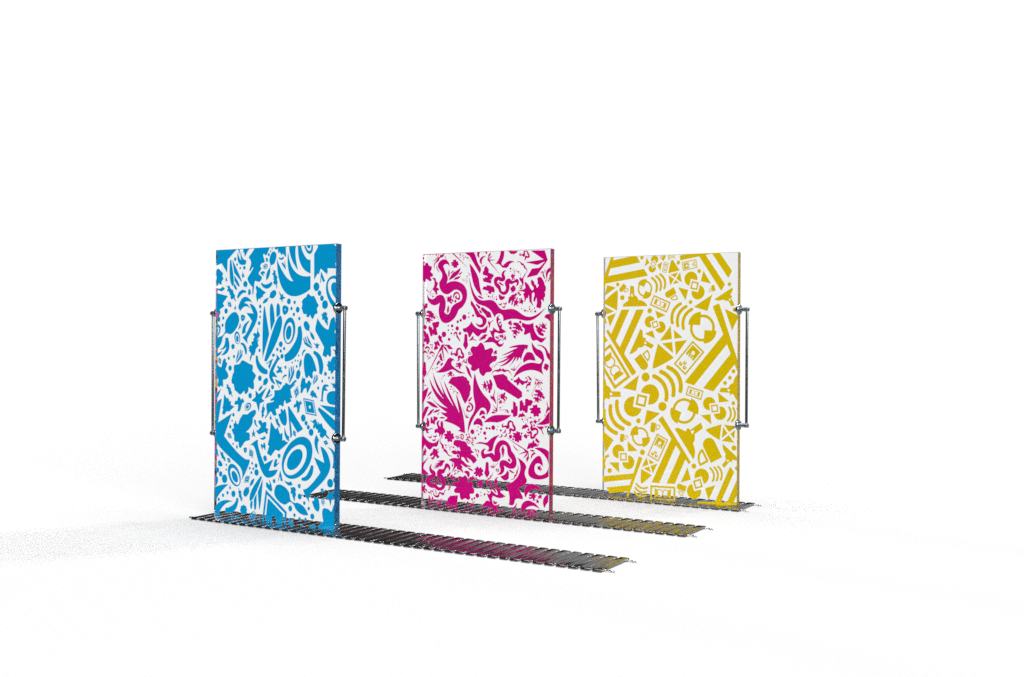
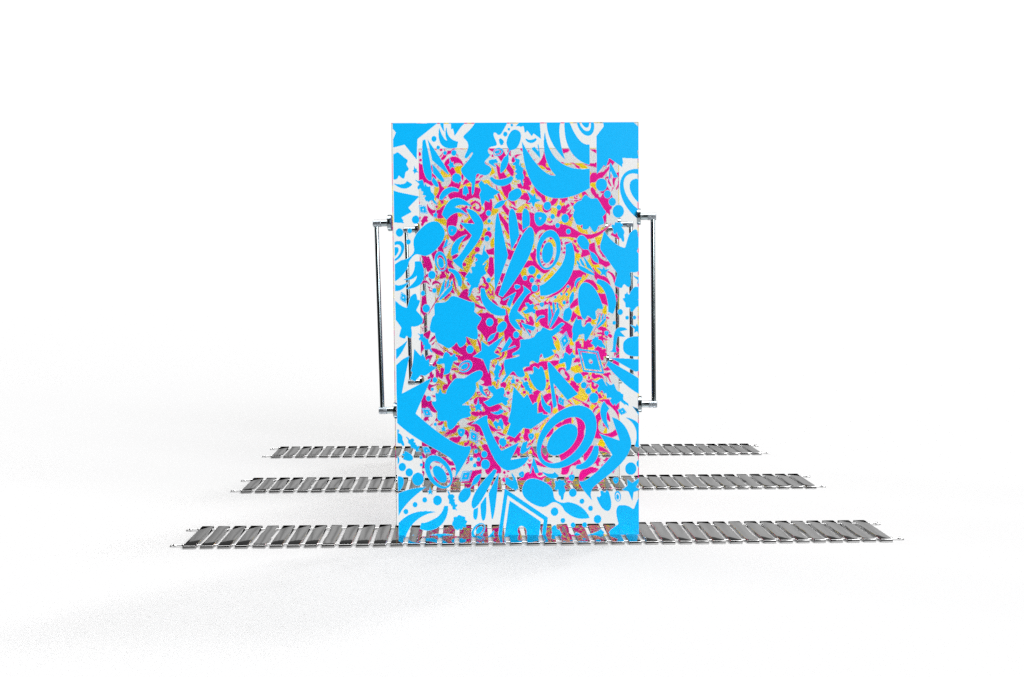


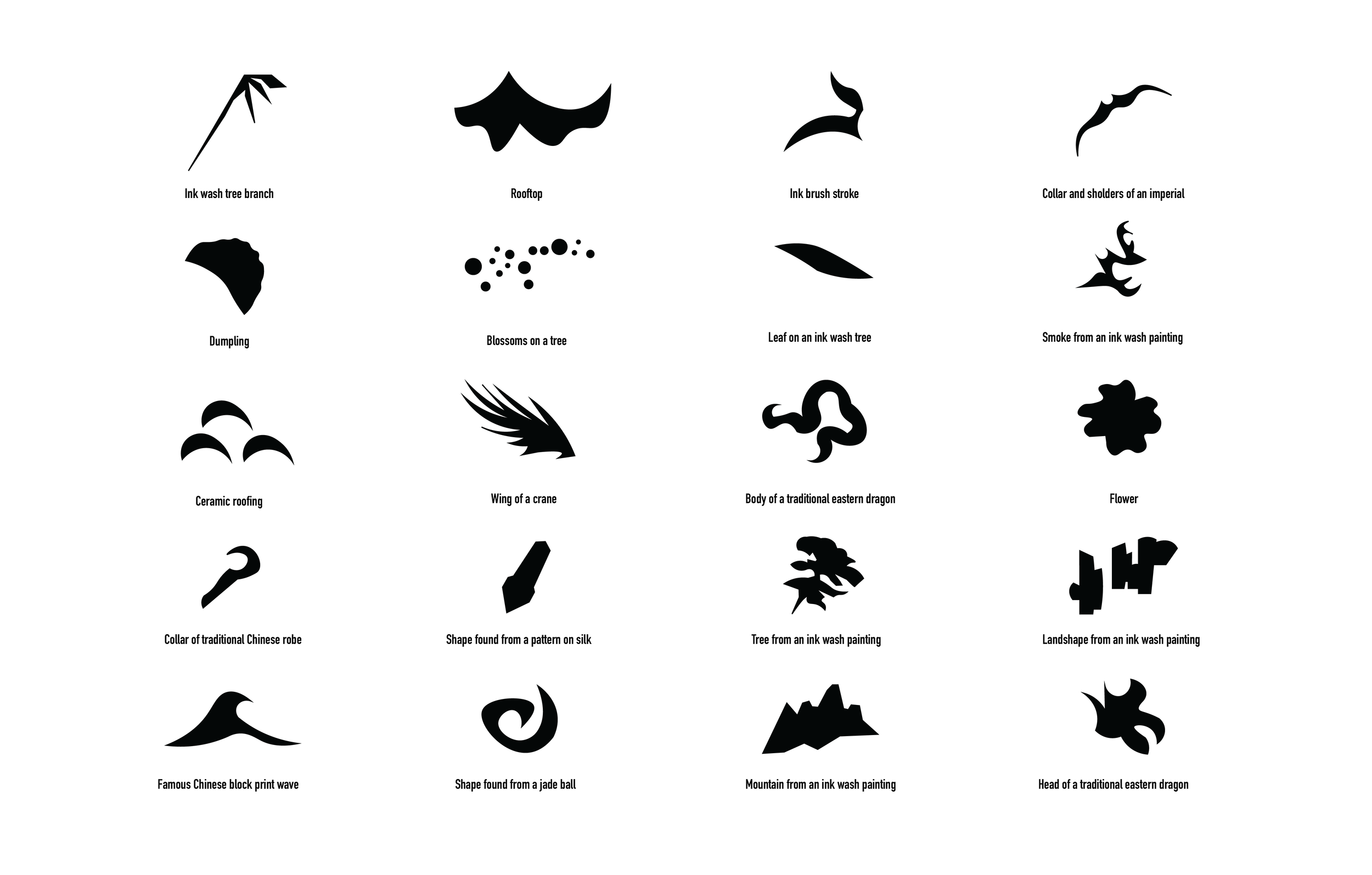
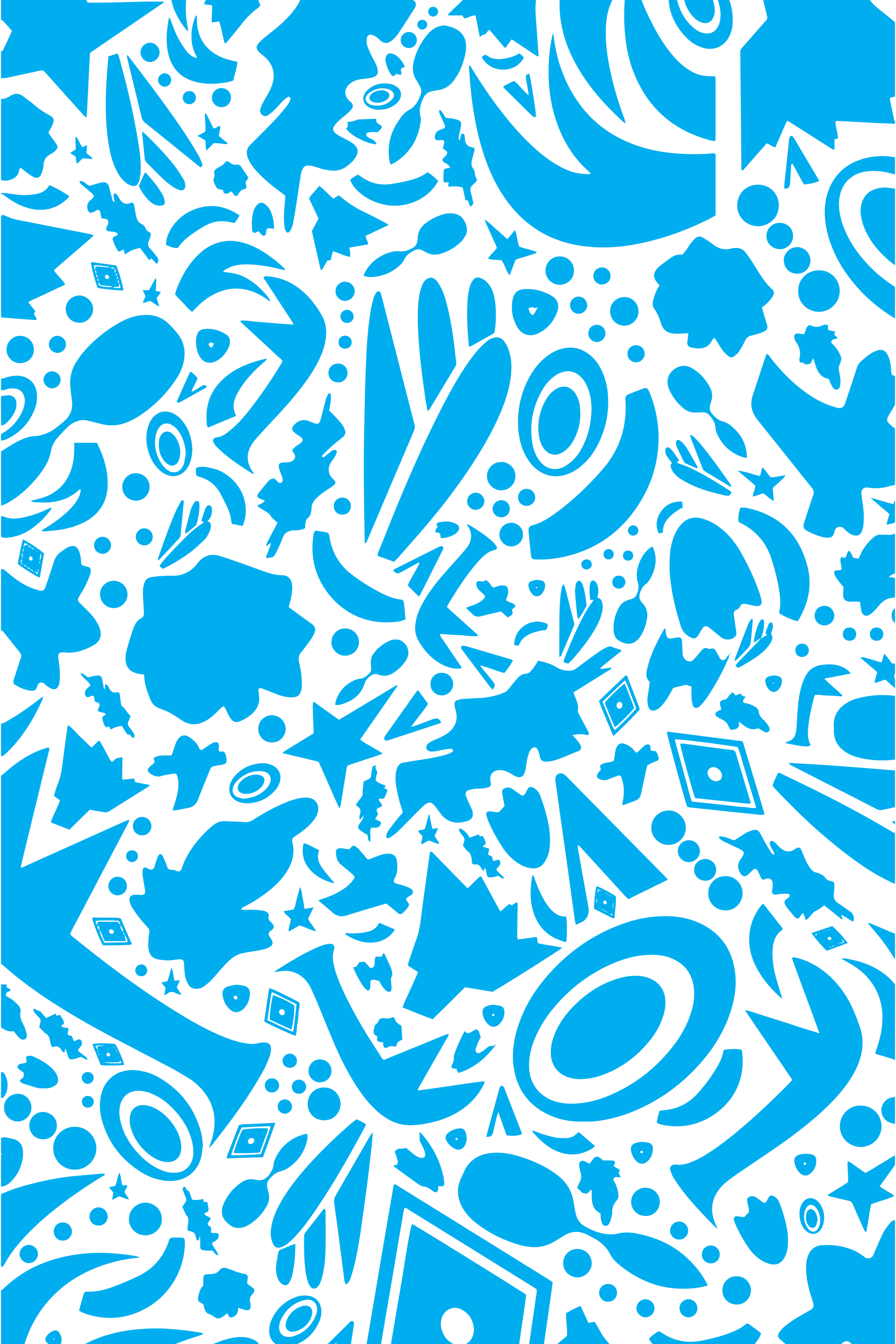
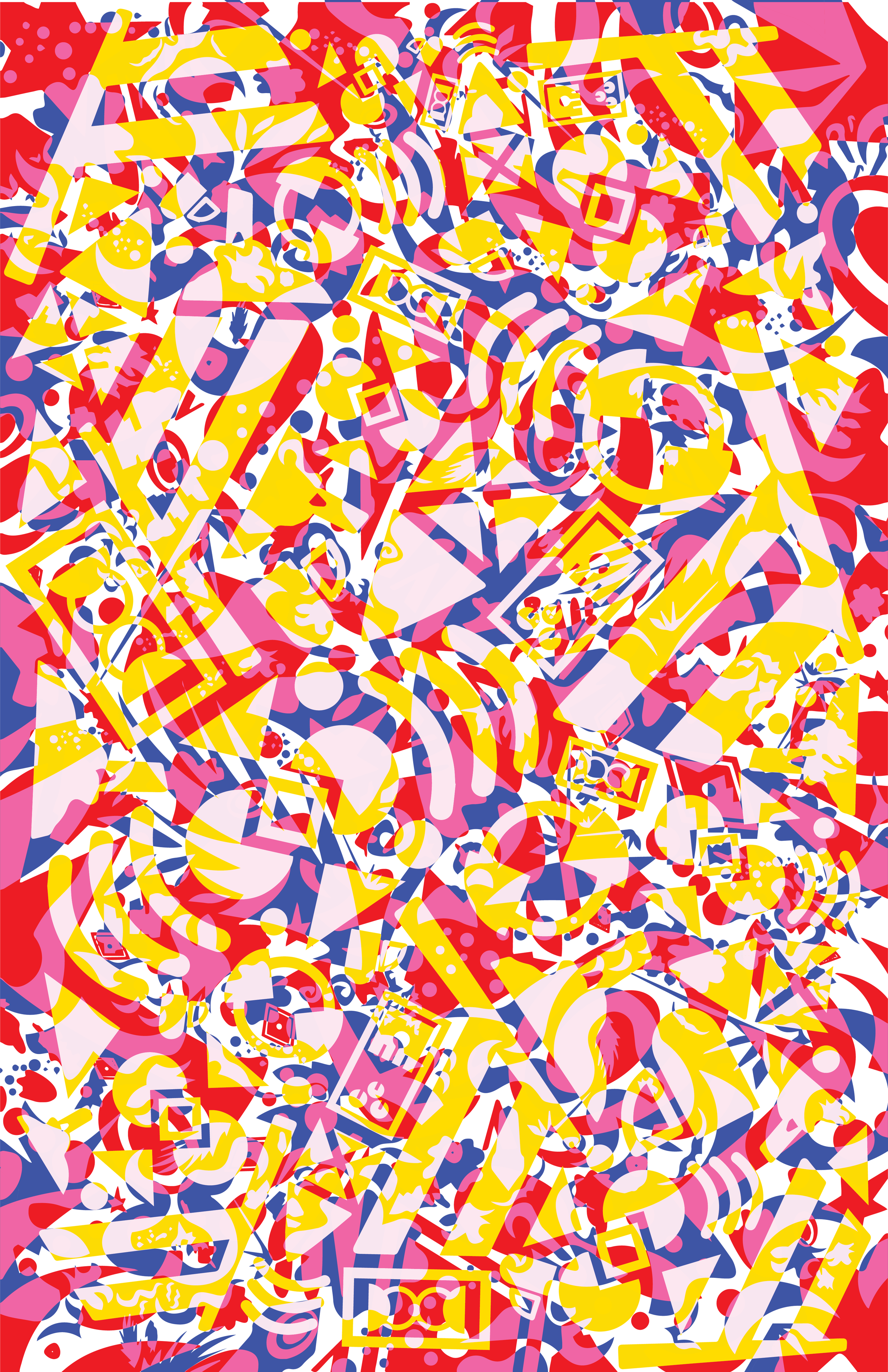
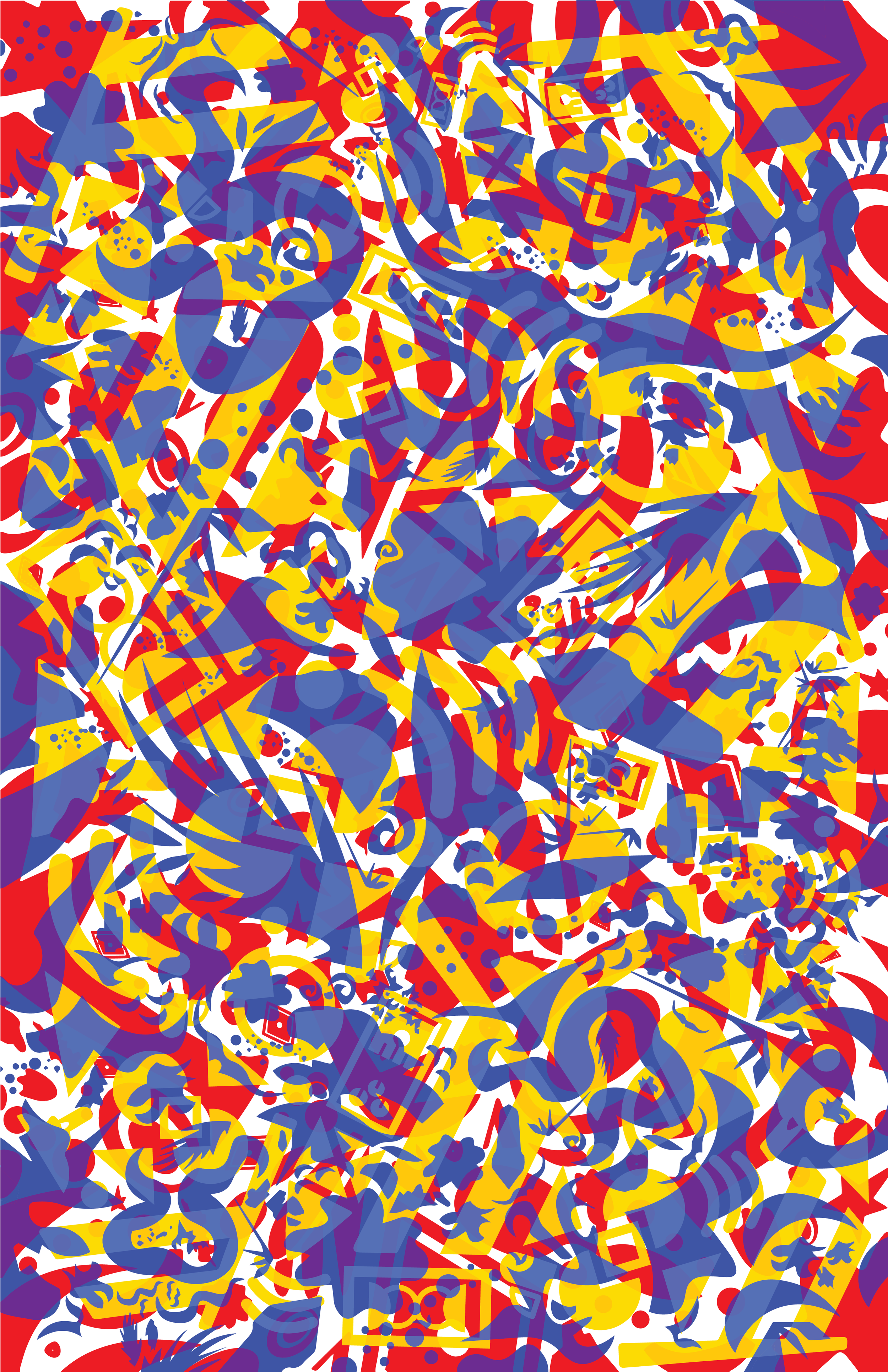
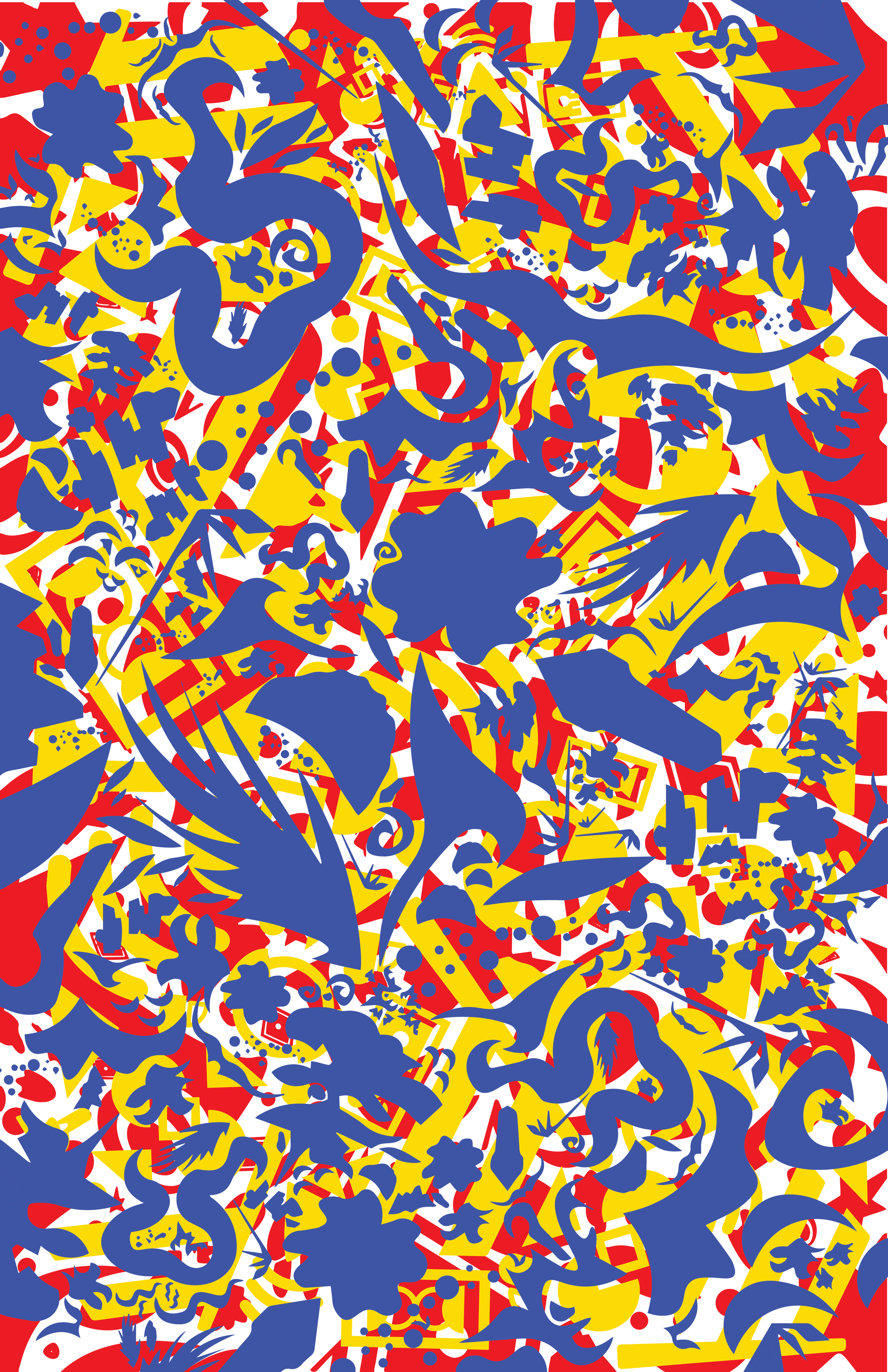
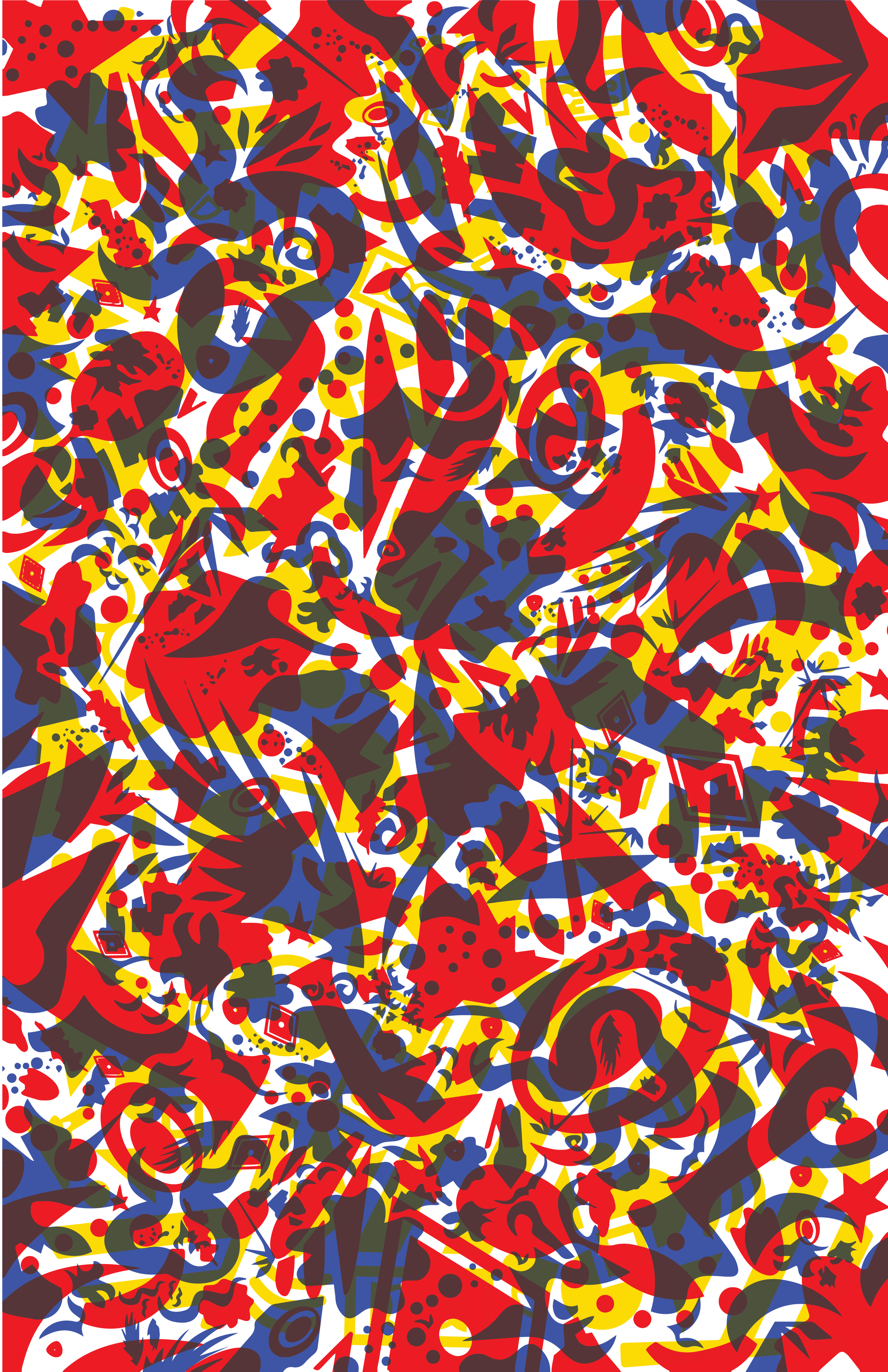
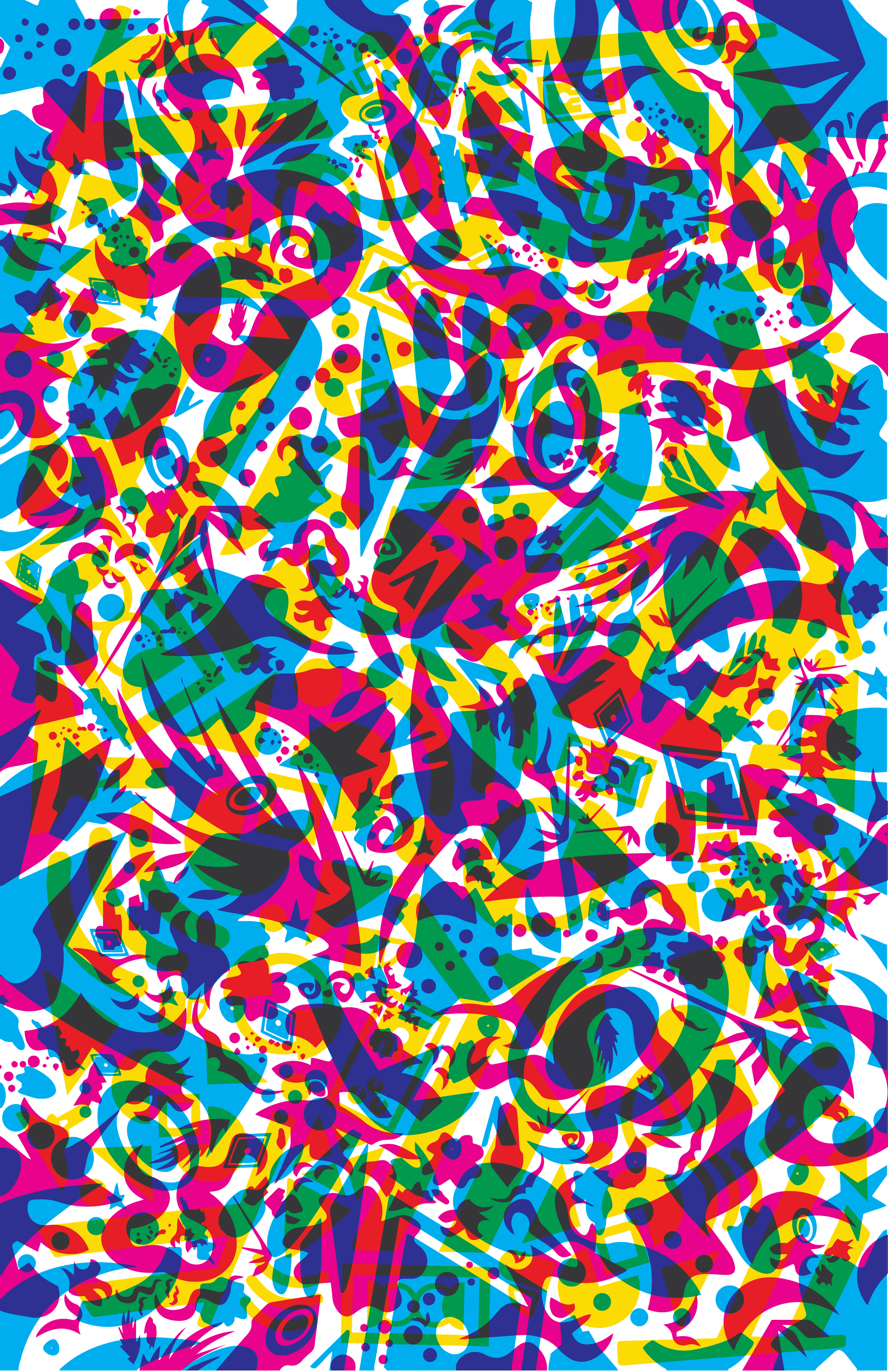
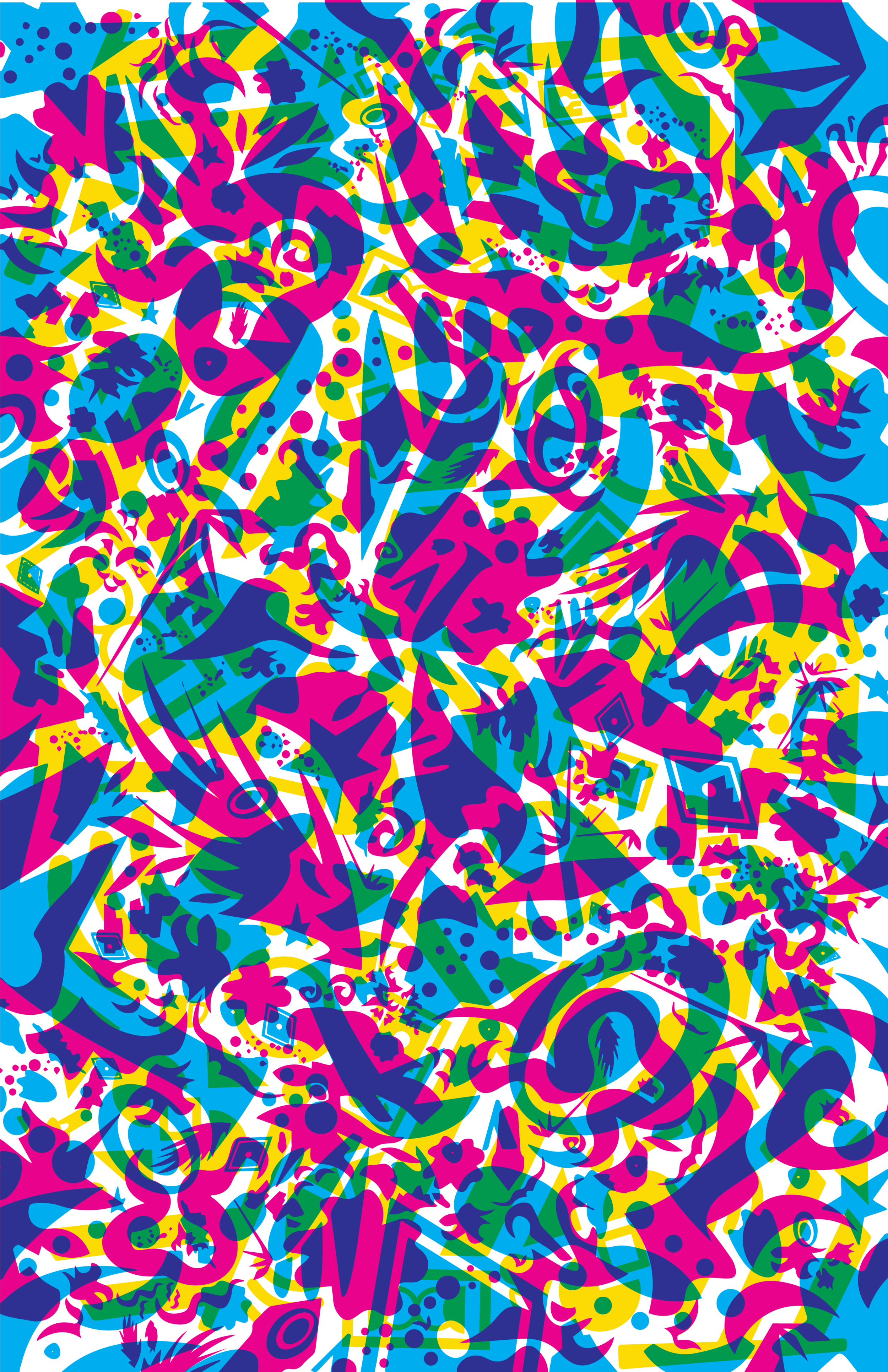
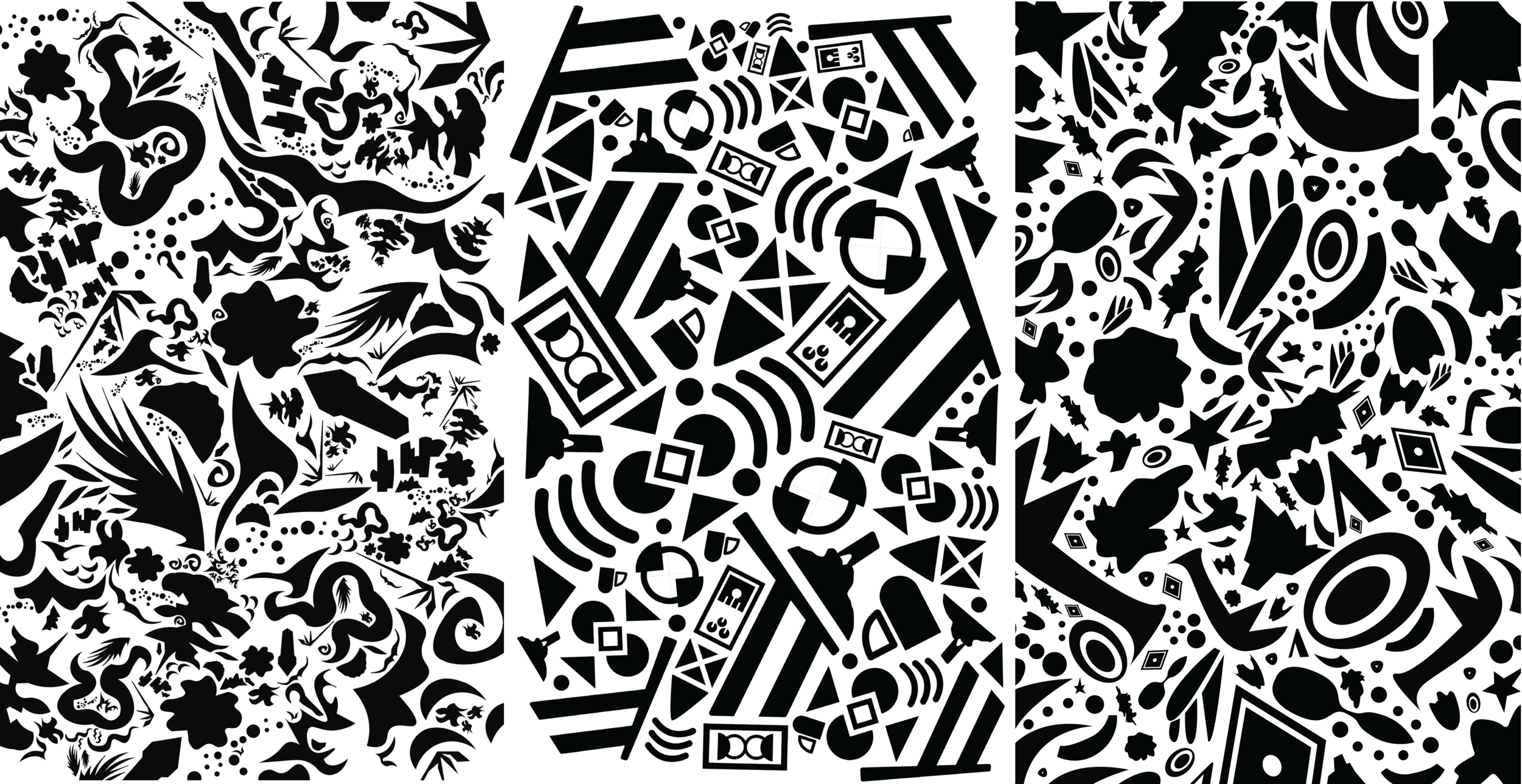
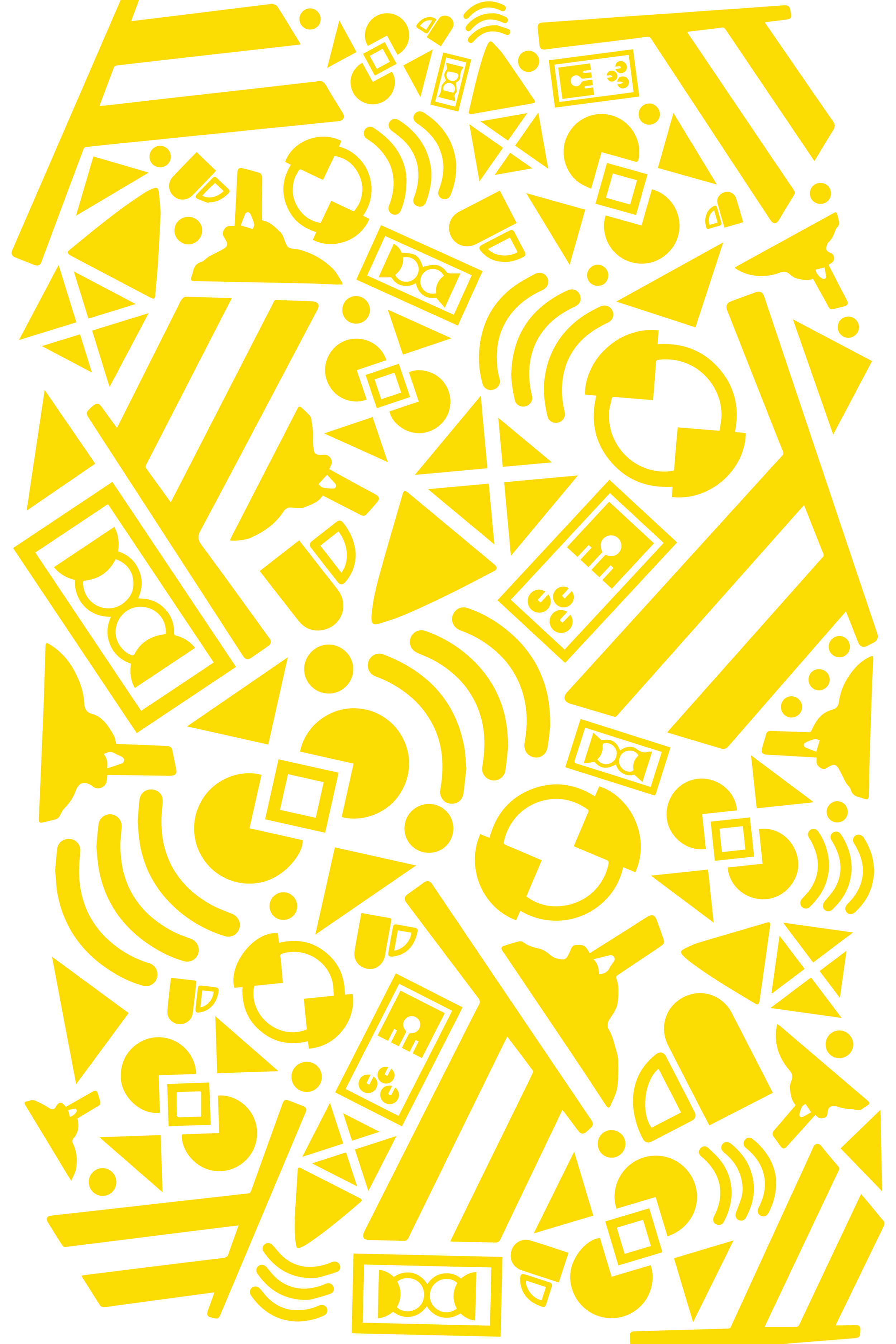
“____ - American:”: On Multiculturalism
Fabiana Echeverri, Nan Hubright, Jackson Gaulke
For this charette, our group decided to tackle the issues pertaining to multiracial/multicultural identities. When you're multicultural, sometimes you may feel as though you don't fit into any of your cultural groups. However, with our charette, we decided to show that being multicultural doesn't mean you have to assign yourself to one specific group. Instead, embracing all your different cultures will create something beautiful altogether. To address this problem, we decided to create an abstract installation that combines our group's different cultures in a way that the community can also participate. The installation itself involves 3 different panes of plexiglass with see-through patterns dedicated to our cultures. These panes of glass would sit atop a track that people can move across via handles on both sides. Viewers can look at the patterns separately, but the beauty truly comes from moving the panes together in a way where all 3 overlap to create a new composition. To start off our process, we collected different aspects pertaining to our culture (like food, music, architecture, natural fauna, fashion, etc.) and put it together in a mood board. Once we did that, we decided to abstract these different objects by looking at their shapes, texture, and colors. Then, we compiled these abstract illustrations together in a pattern that would really push the essence of our different cultures.
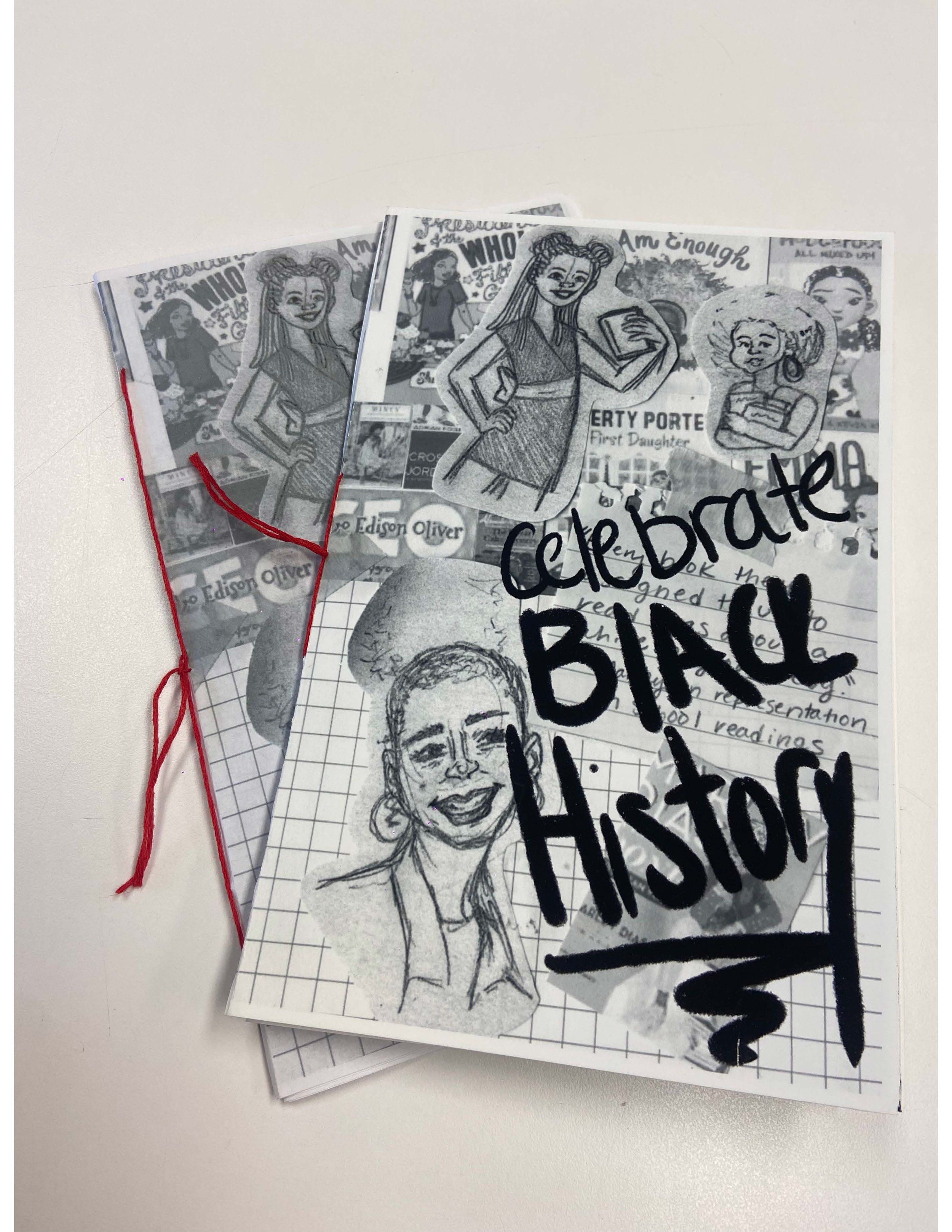
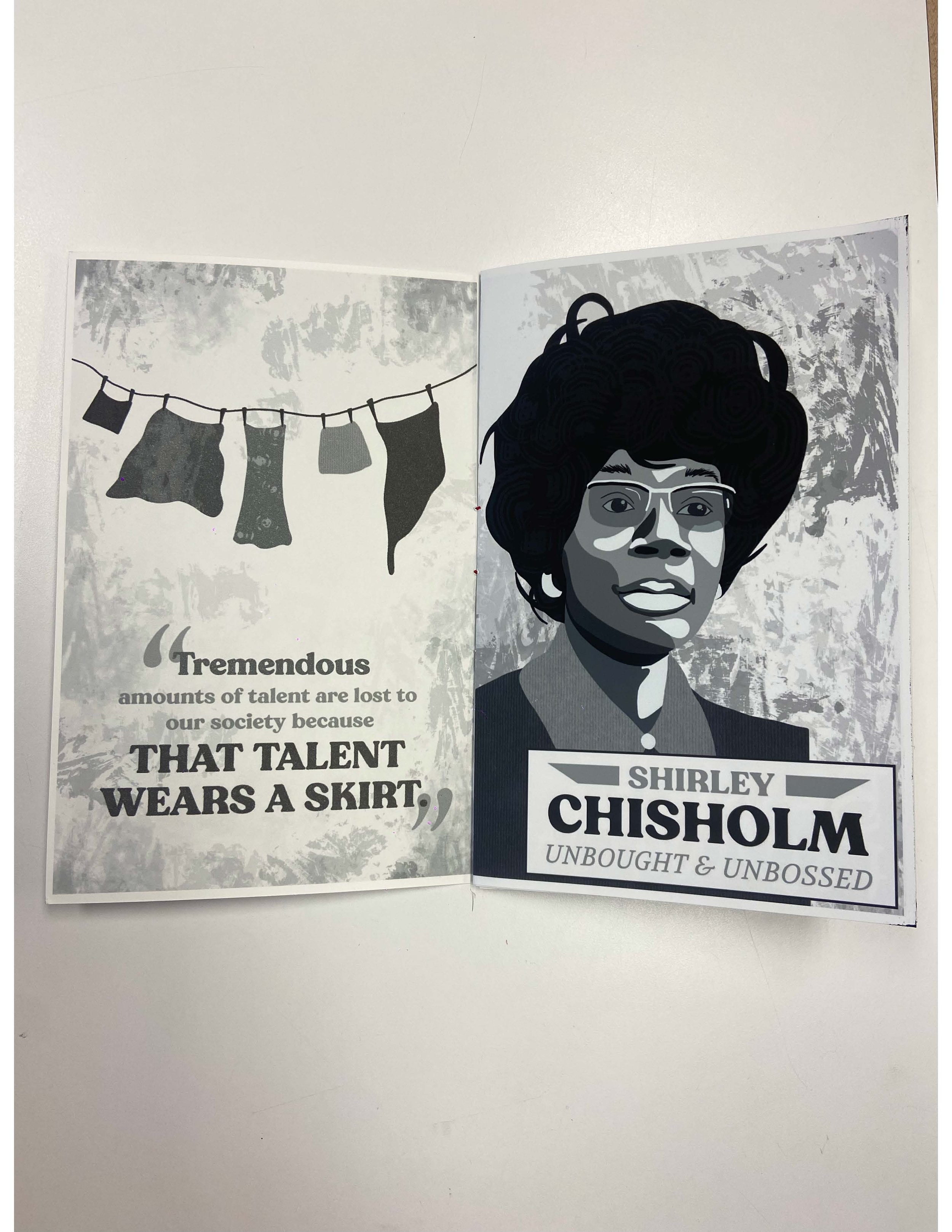
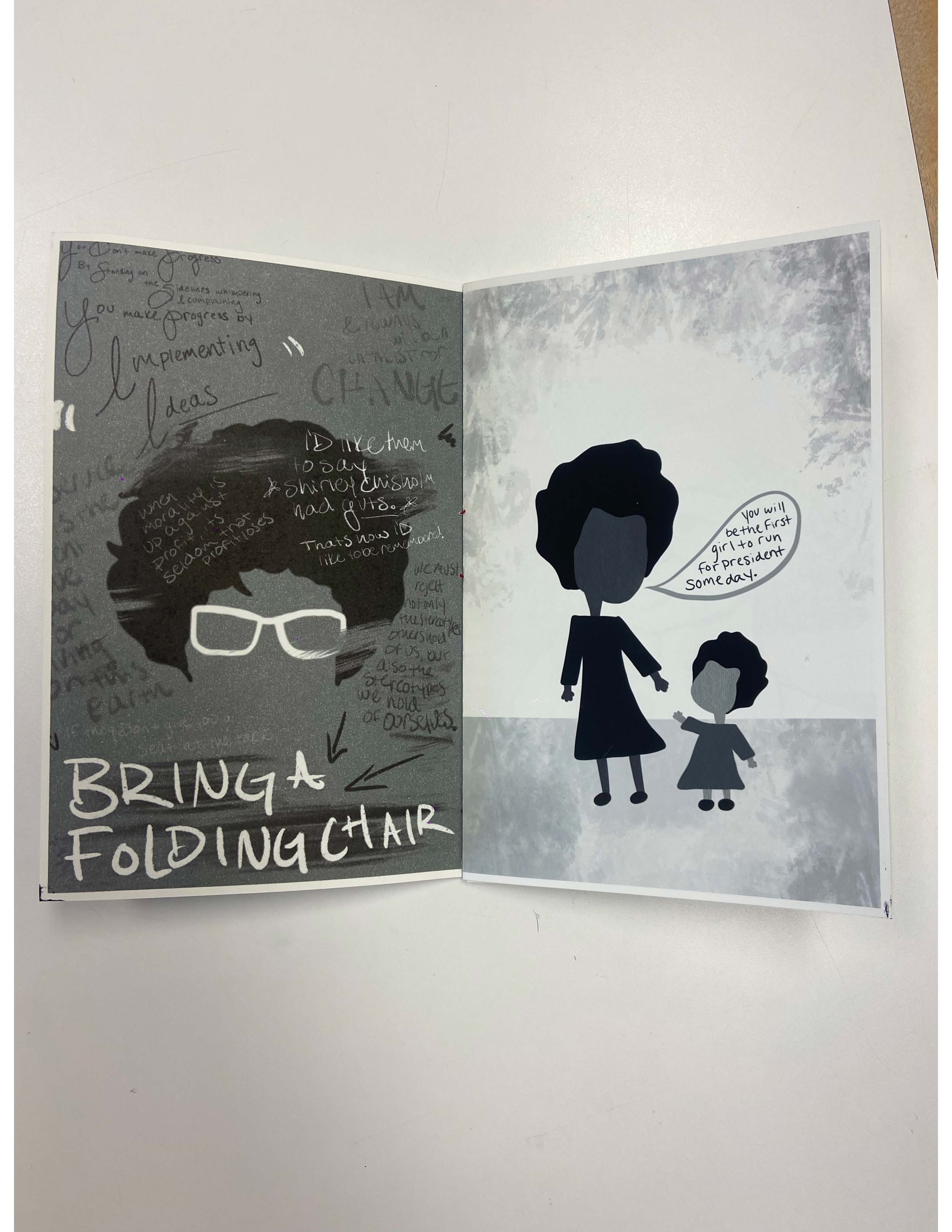
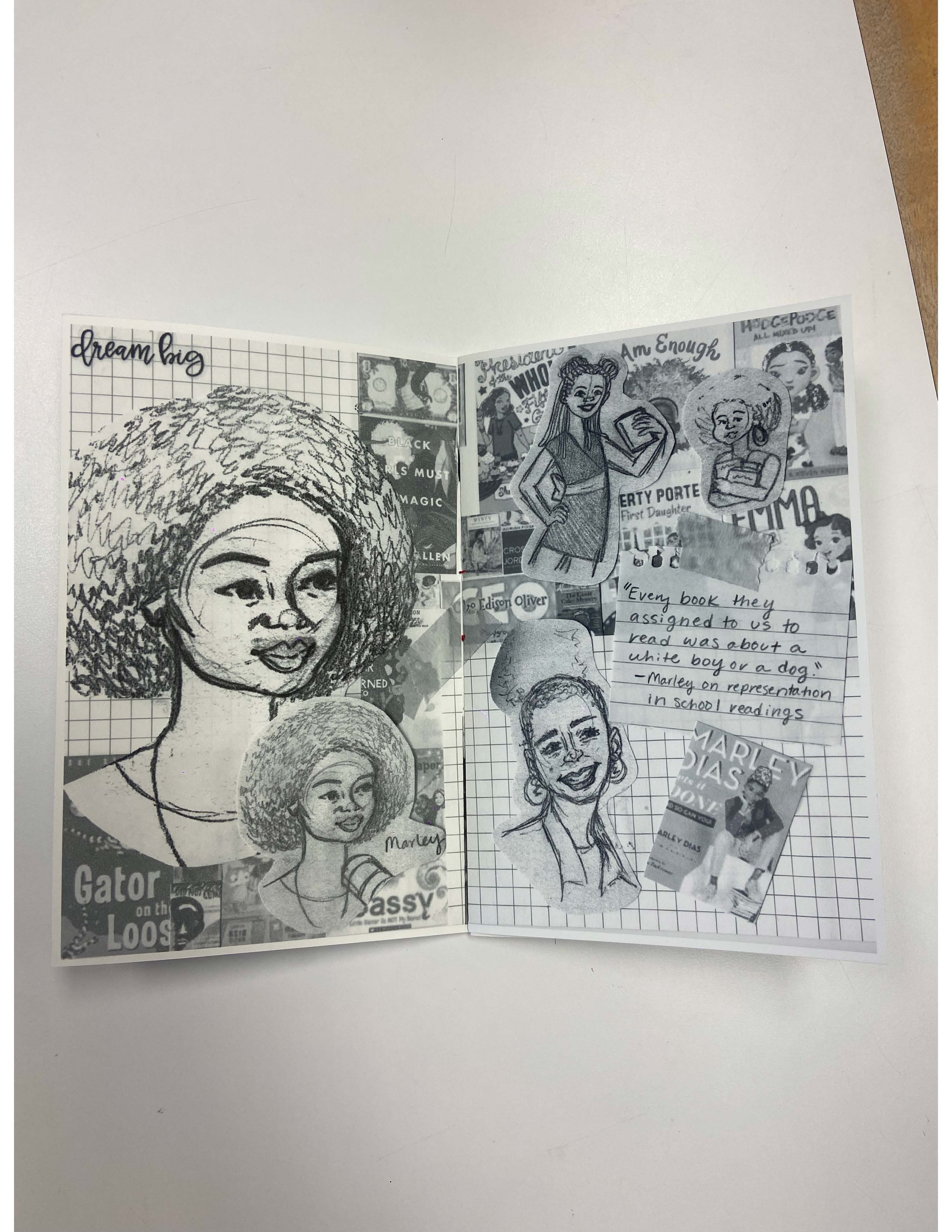
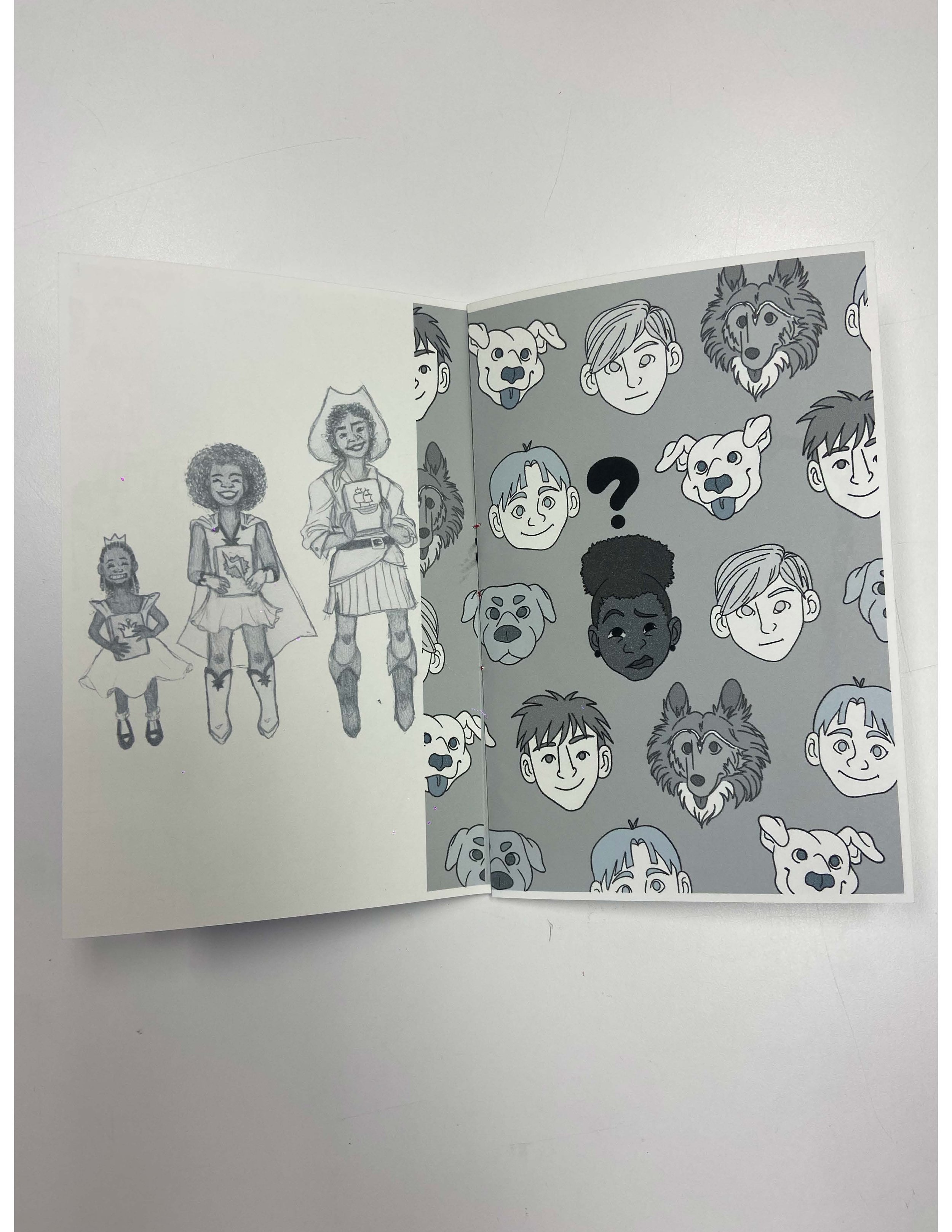
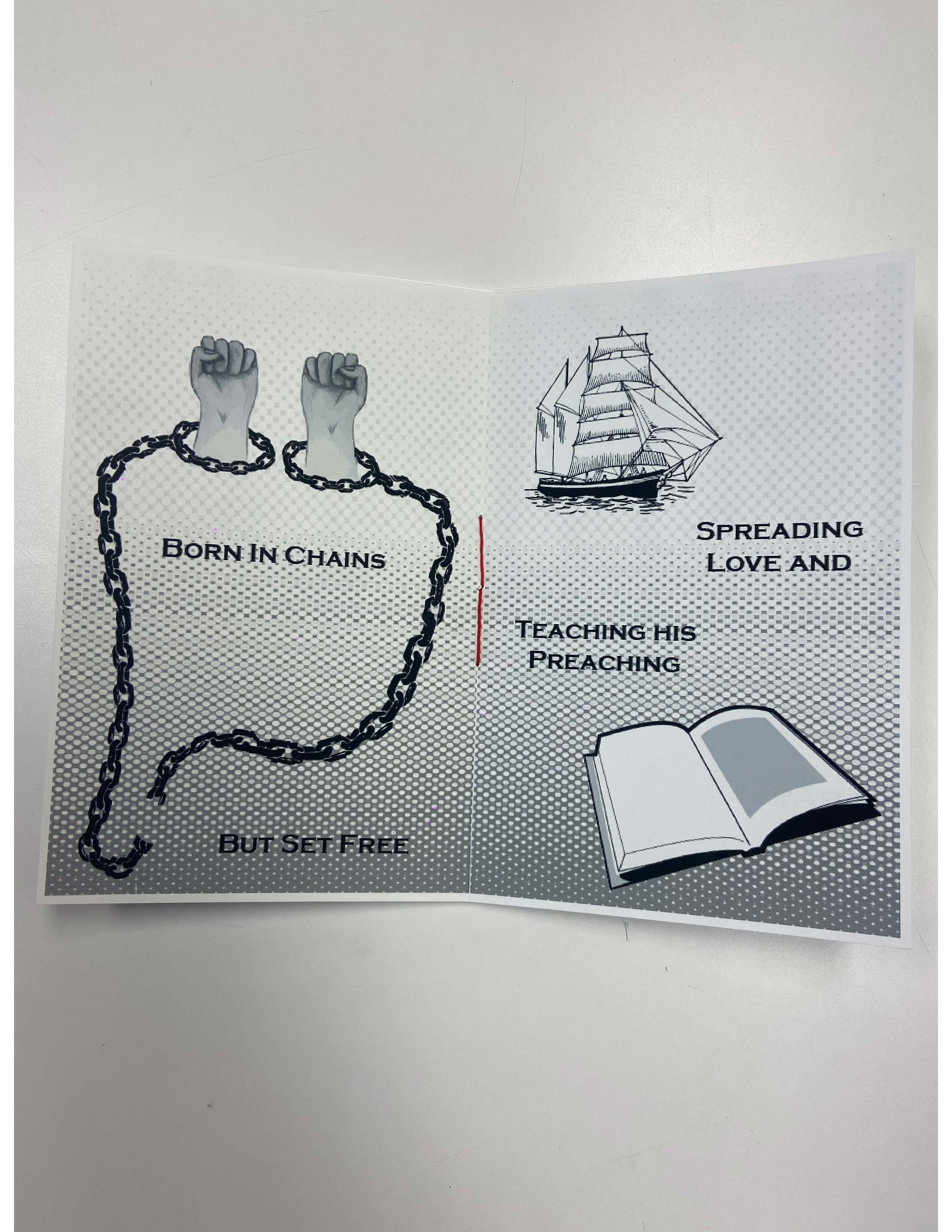
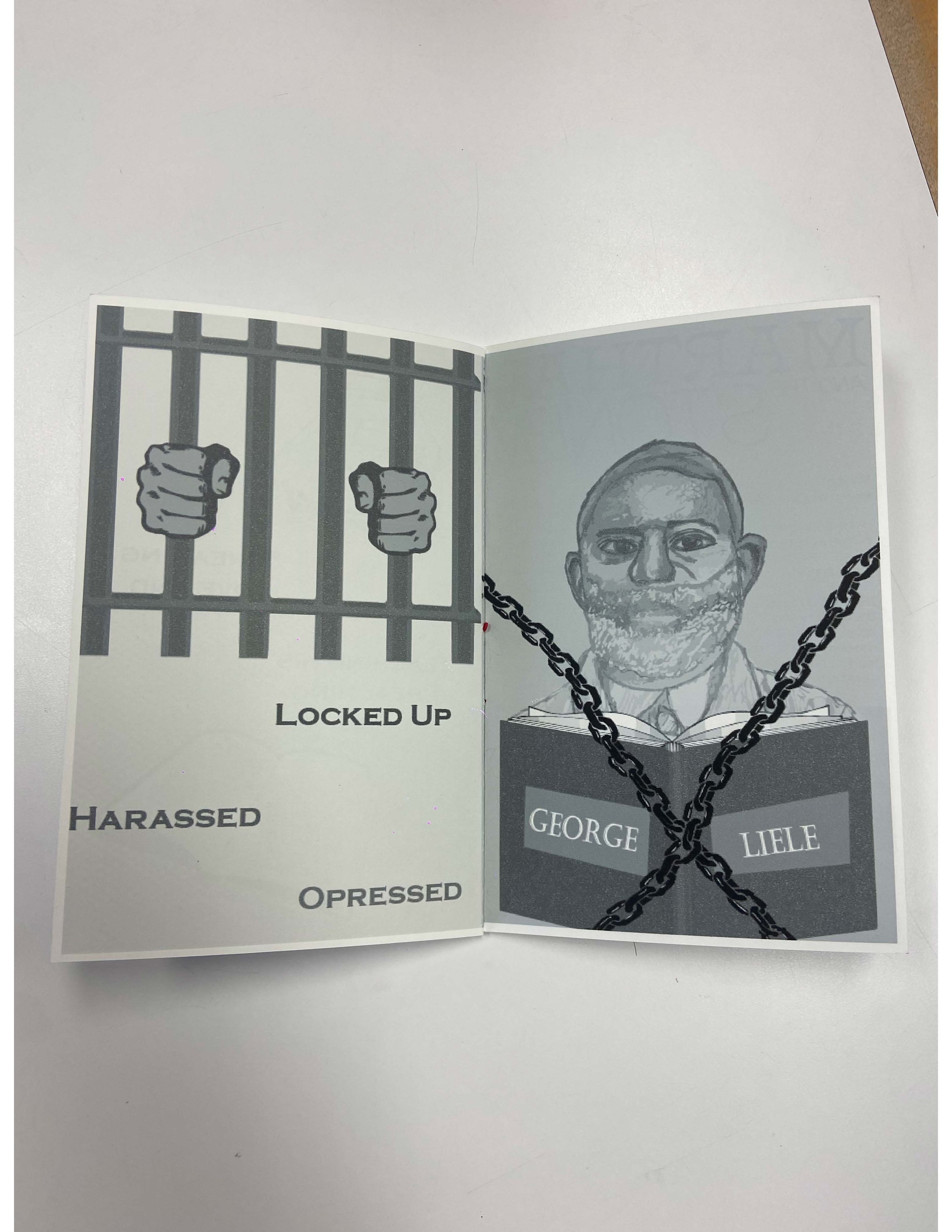
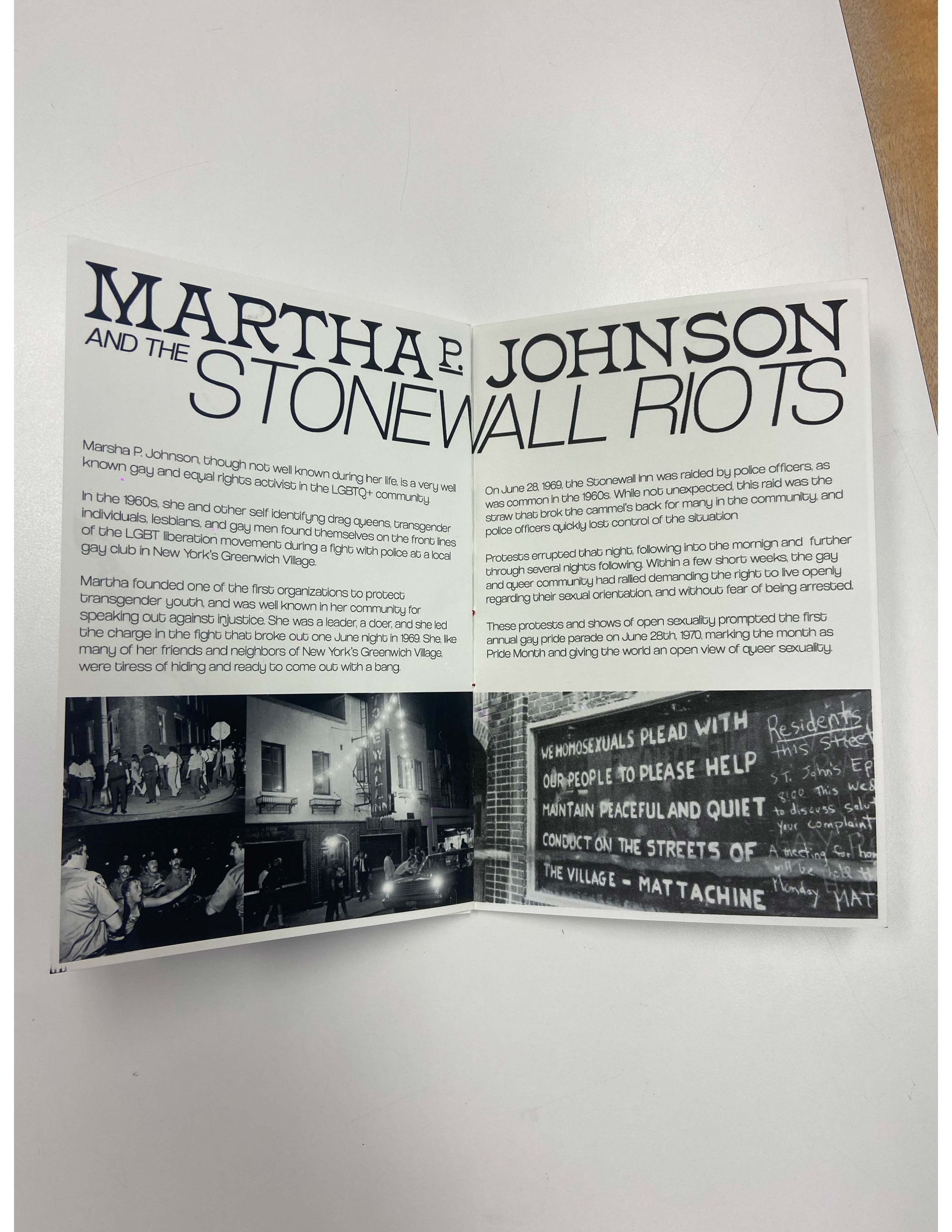
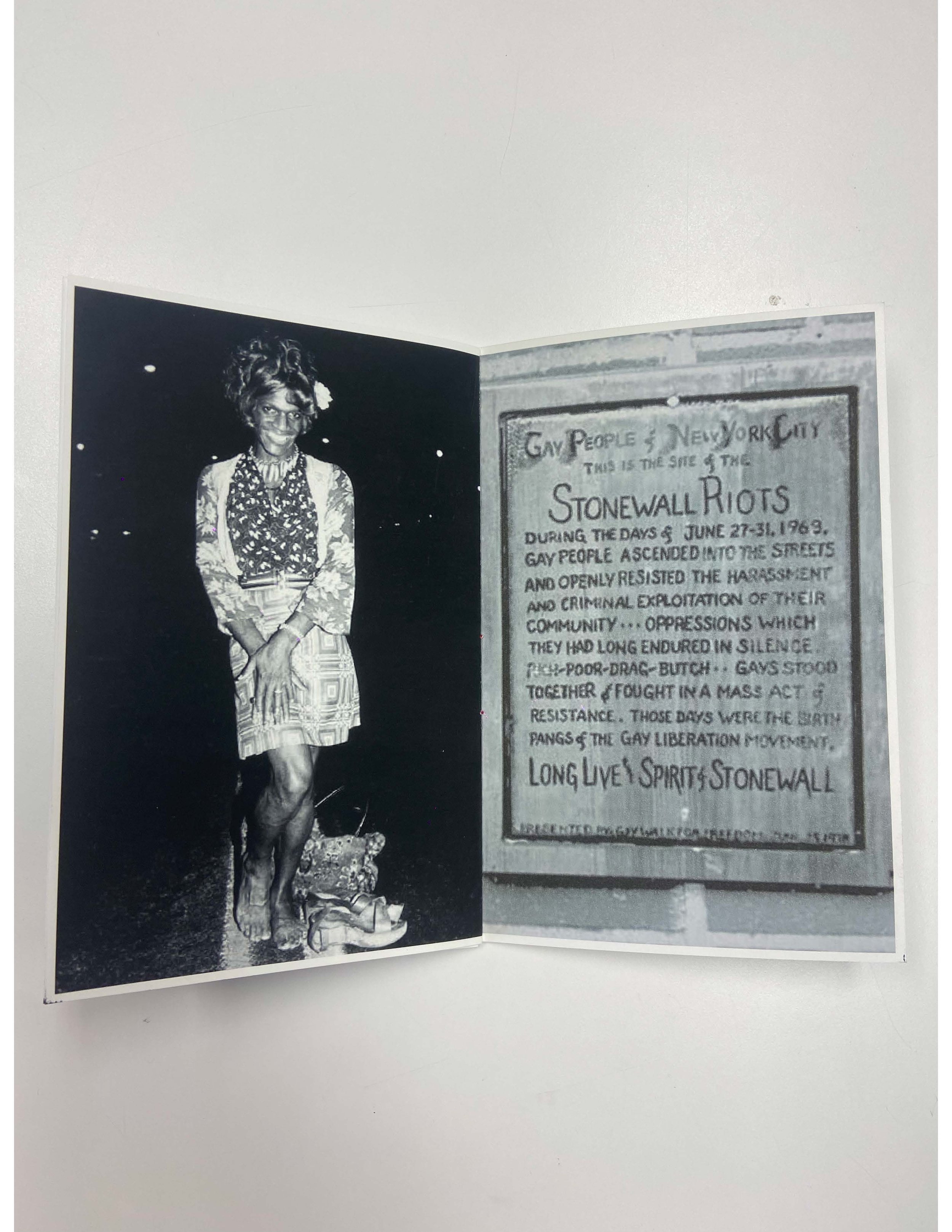
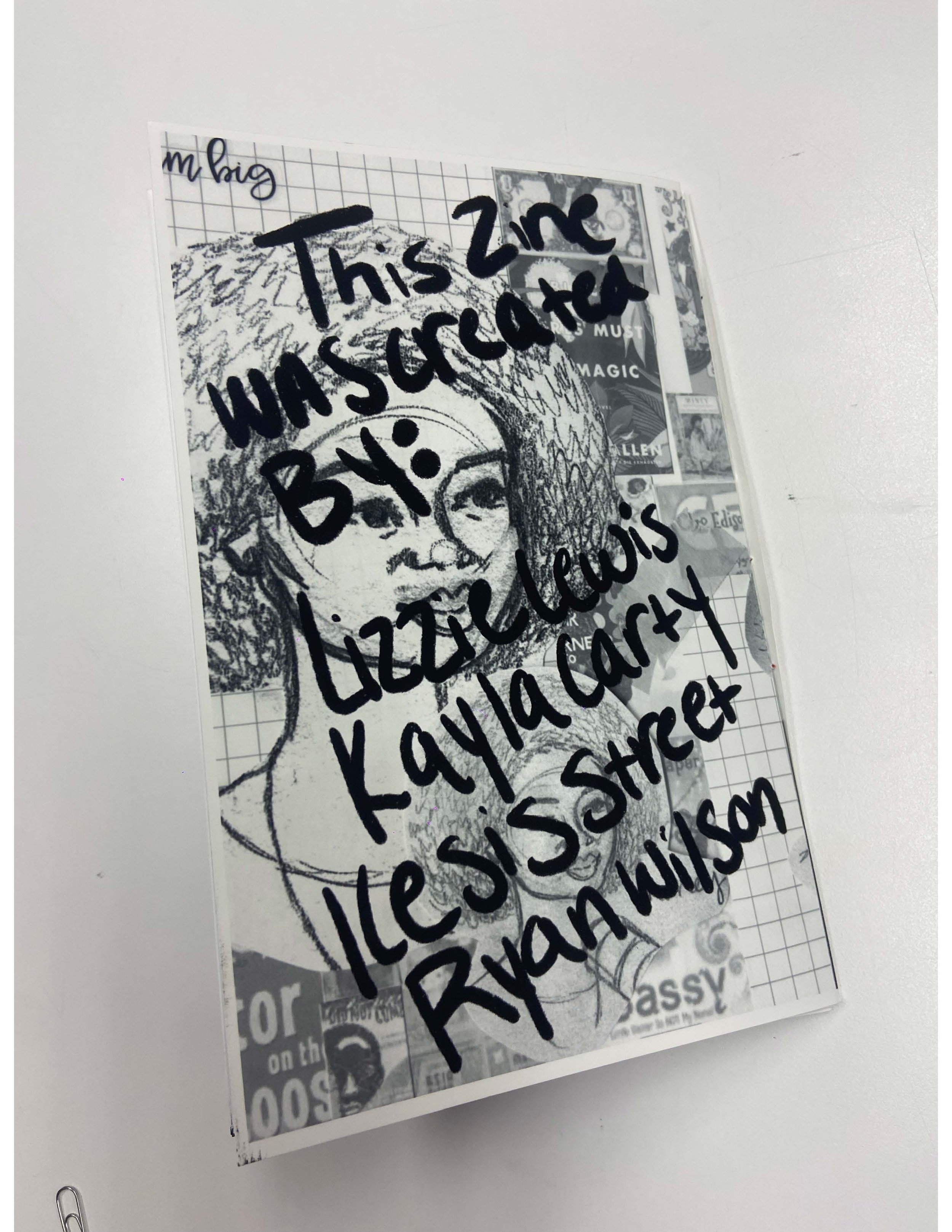
Lizzie Lewis, Ryan Wilson, Mikayla Carty, Icesis Street
Our group project is a creative zine celebrating Black History Month. Each group member took on a topic including age, orientation, class, politics, and religion and chose a person that is or has been a pivotal figure in that respective topic. The zine is curated of illustrations and information celebrating that persons influence in history.
Marcela Salvatore, Hannah MacDonald, Mitchell Zarkis, Daniel Neath
Animated and still posters that give viewers a "walk in my shoes" experience with different disabilities. These posters explore the charrette topic “Obstacles to (Dis)Ability.”
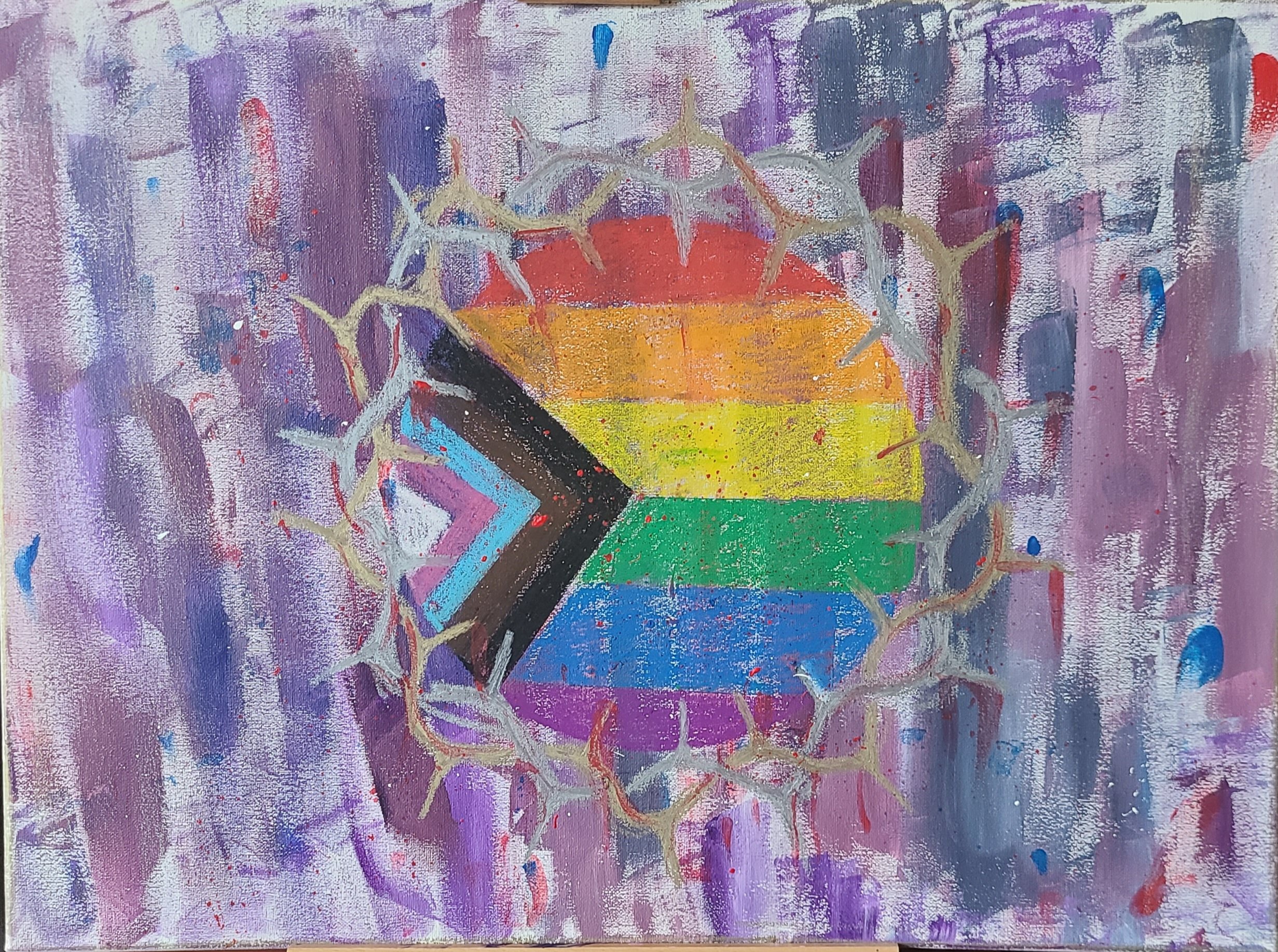
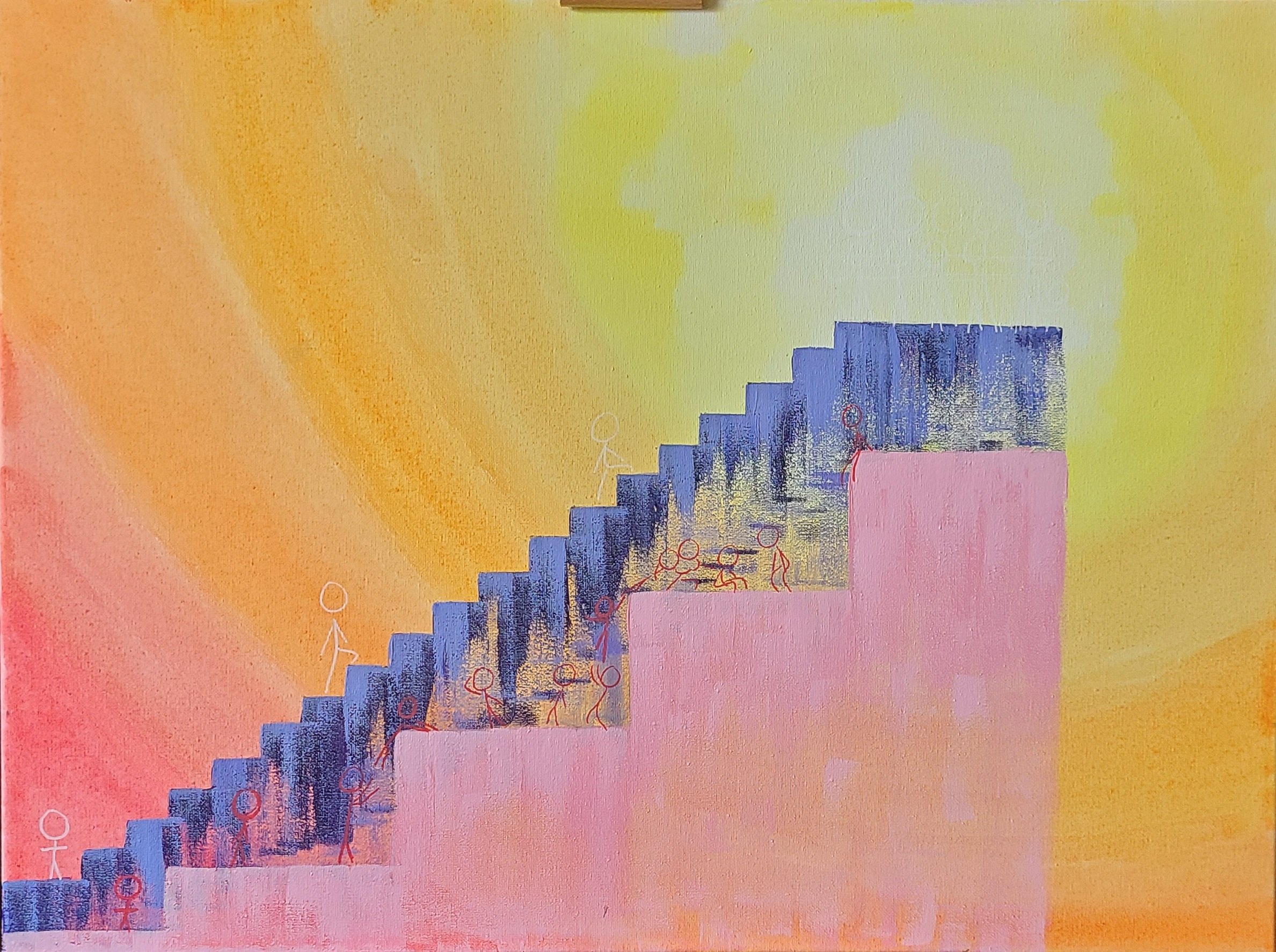
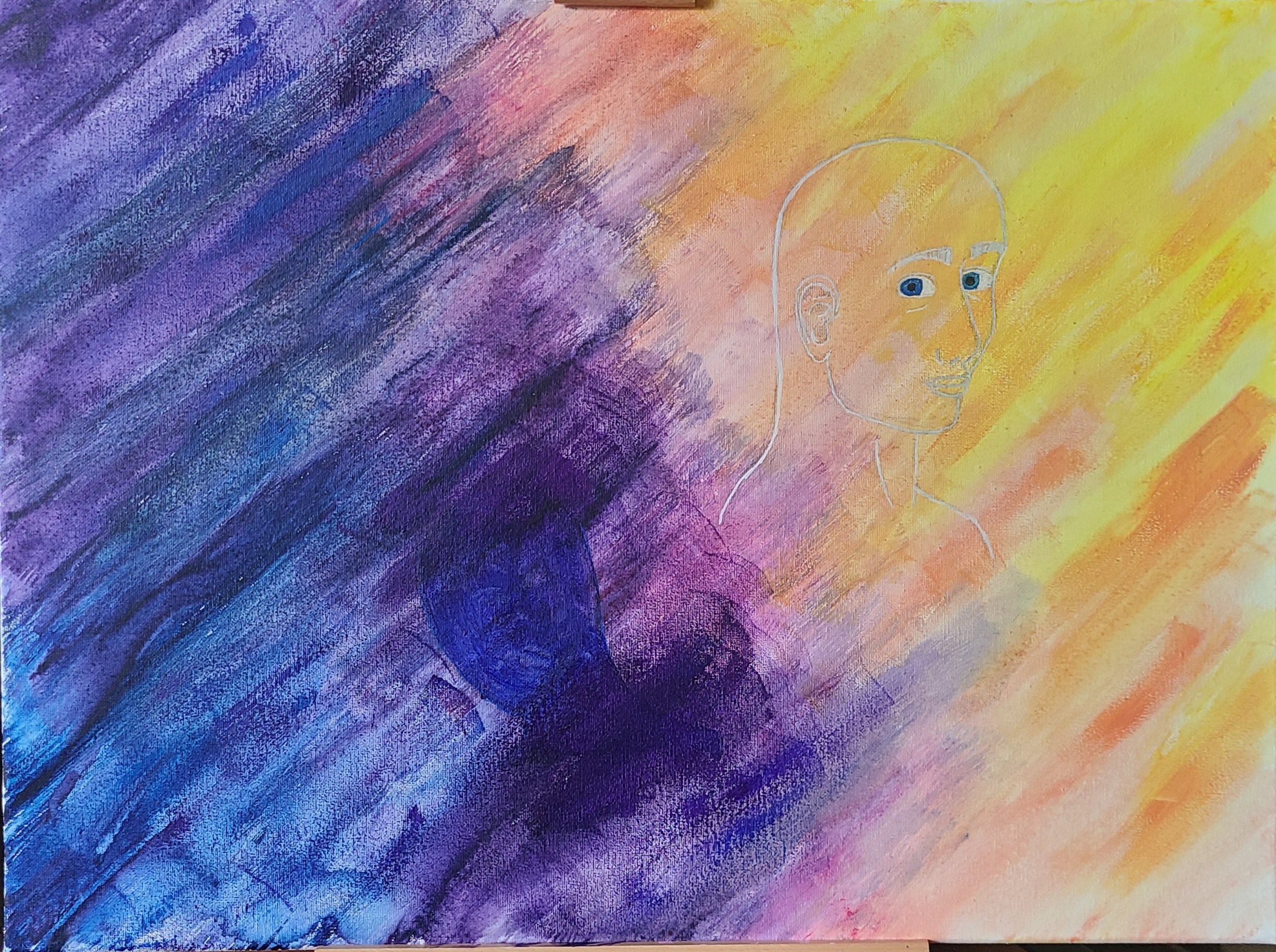
Madison Puente and Victoria Parga
There are many issues and obstacles that minority, immigrant, disabled, rural, and LGBTQ+ people encounter, yet are seemingly taboo to talk about, or are just generally not understood or known by the broader public. By taking action in talking about these topics we open the door to more civil conversation and become one step closer to gaining equity for everyone, no matter their background or identity. These pieces are representations of how we view these complicated issues, whether it be firsthand or through others, and express our emotions and understanding that comes with tackling these complicated matters.
Spirituality and LGBTQ+
For this artwork we strived to convey the conflict that is religion and being LGBTQ+. Being part of LGBTQ+ I have often seen and heard harmful things being said in the name of God. This caused a lot of strife in my life, but also with my own religion preferences since I feel that I can not truly be LGBTQ+ and religious at the same time. In my piece I strived to communicate such struggle of being LGBTQ+ in a world where a big part of society does not fully accept you as well as the internal struggle of trying accept yourself.
Steps of Inequity
In this piece we represented the two halves of a single person living with their disability. At times we have to put ourselves out there despite how we might feel about the given situation at hand. This can cause internal conflict and unease as we strive to lead a normal life. We also face the backlash that comes with having disabilities that aren’t on the surface level, and dealing with people’s reactions and attitudes towards us.
Two Halves of a Whole Person
With this piece we strived to show just hard and unequal the steps to getting proper health can be if you are an immigrant, minority, rural, or part of the LGBTQ+ community. Not only do these people have to face discrimination but the level of care and even cost can be vastly different if you weren’t born into the right income or color of skin. This piece shows just how much harder the people in the front have it, and their struggles to achieve as close as they can to the people with better privilege in the back.
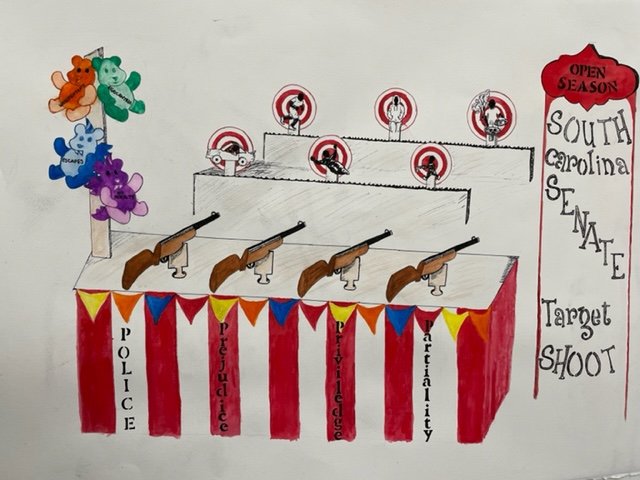


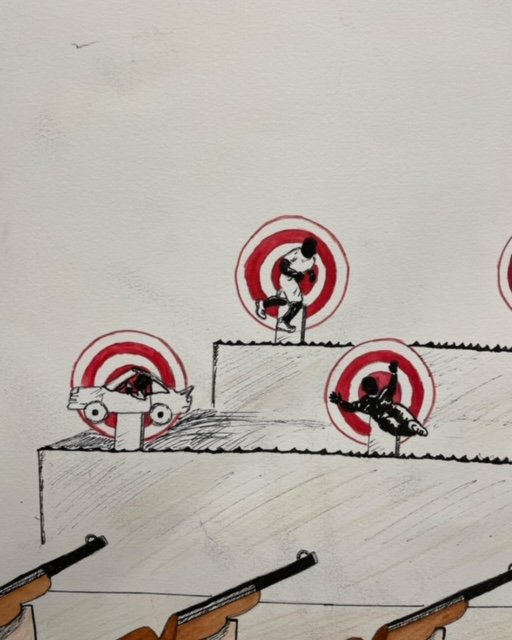
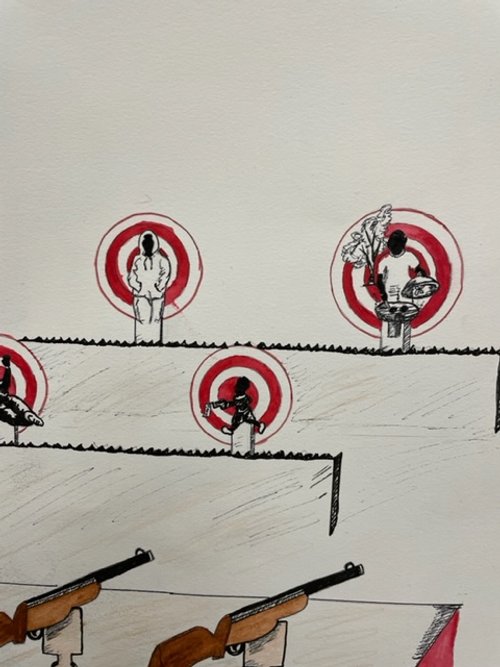
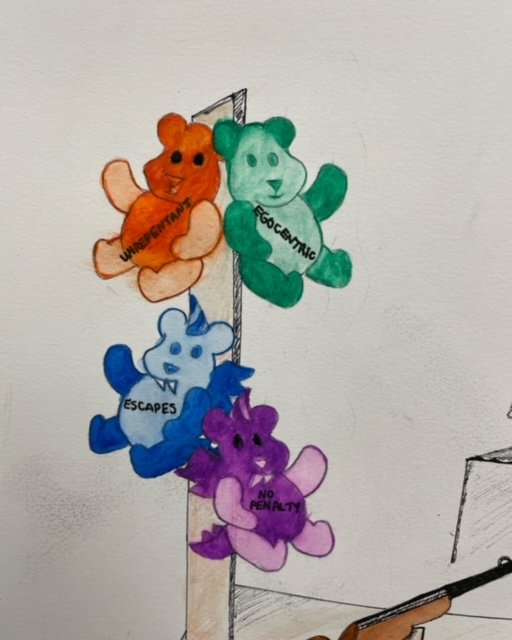
Cicely Hill
Cicely’s project addresses the charette topic “Other and Afraid: Living in a state that refuses to pass a hate crimes bill.”
Claudia Stewart
My piece that I have been working on is supposed to illustrate the internal struggle that surrounds being a part of the LGBTQ community and also having religious beliefs. I painted a balance scale that had the two weighing equal amounts because one is not more important than the other. The painting is split diagonally with bright colors on the LGTBQ side to signify light and love, and the other side with a cross is darling in tone with various shades of blue and purple to symbolize how the LGBTQ community may see religion as dark. I surrounded the painting with positive scripture that I thought was affirming.
David Walls
This project consists of one artwork, a 36"x48" acrylic on canvas painting. The painting is in the vein of optical art, consisting of repetitive lines forming an arrangement of abstract amoebic images that allude to the biological nature of humans. Different colors are utilized, such as black, brown, white, and parchment. Most of these colors reference skin, and when depicting amoebic forms acting in a sort of harmony, will cause the viewer to question the relationship and difference between the outward appearance of people and the sameness of their internal biological functions.
Justyce McClintock
Justyce’s project is a powerful conceptual poster about awareness of erasing the mindset that biracial individuals have to "choose a side" and being able to enjoy being part of two races.
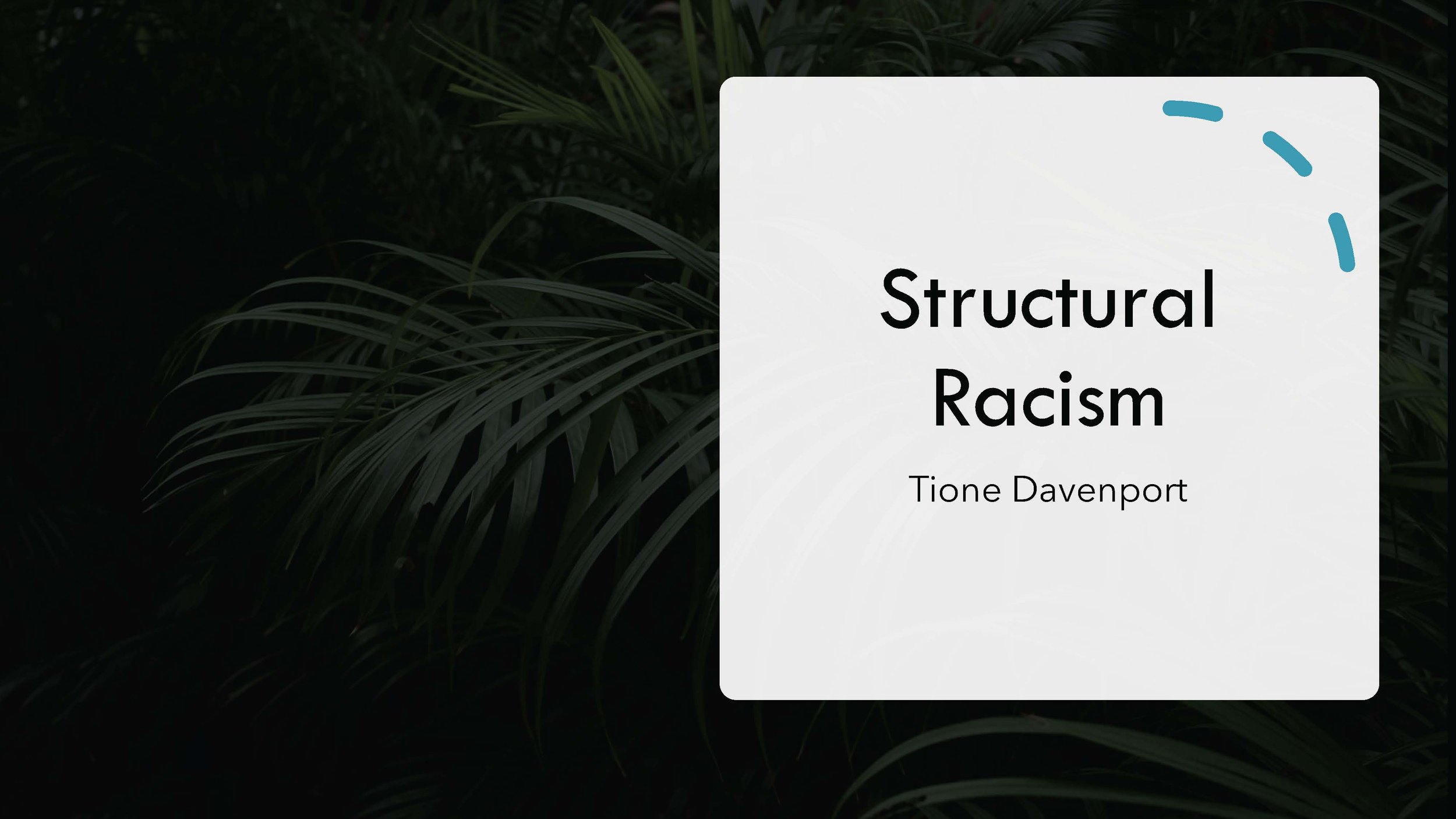
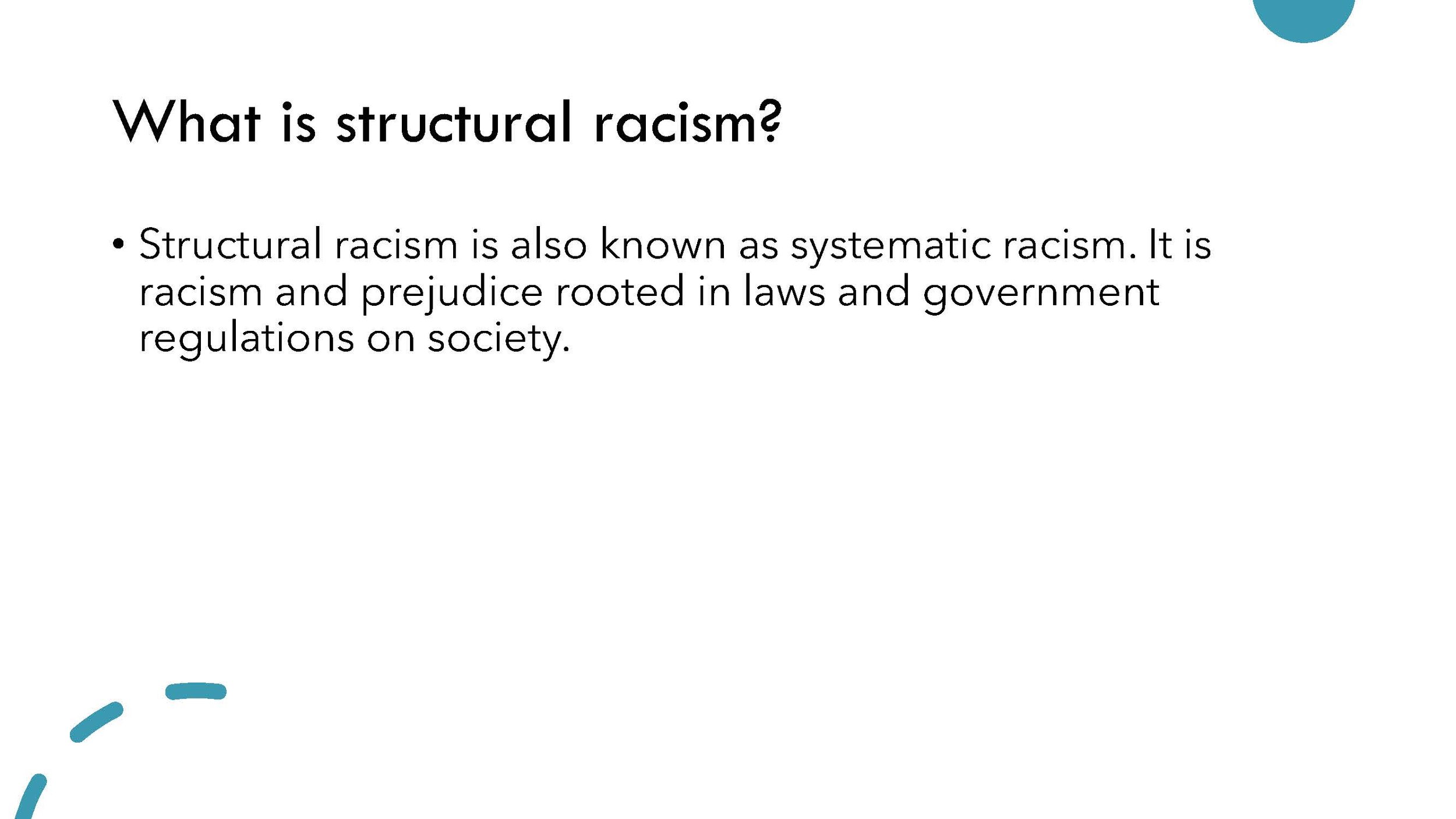
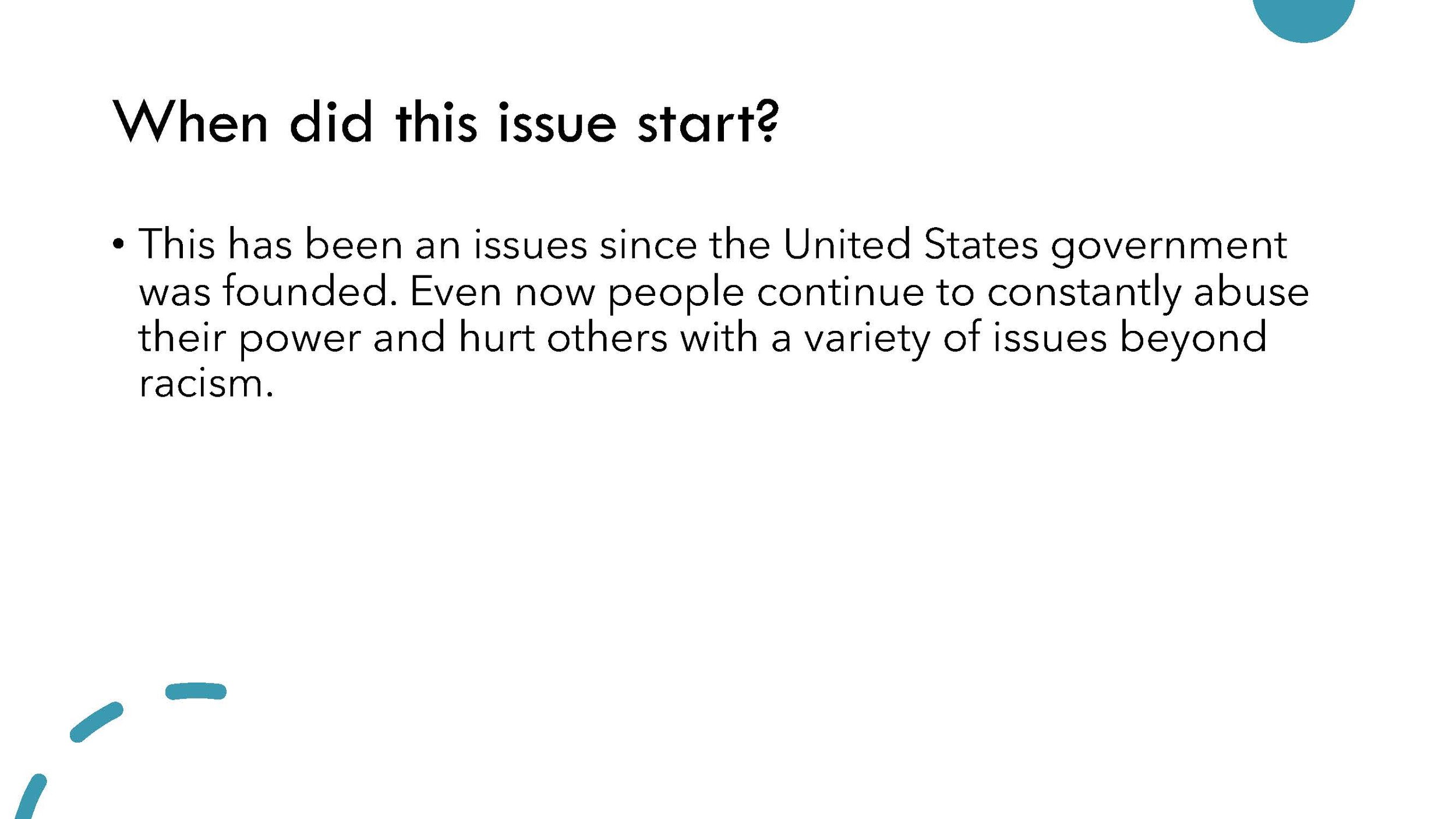
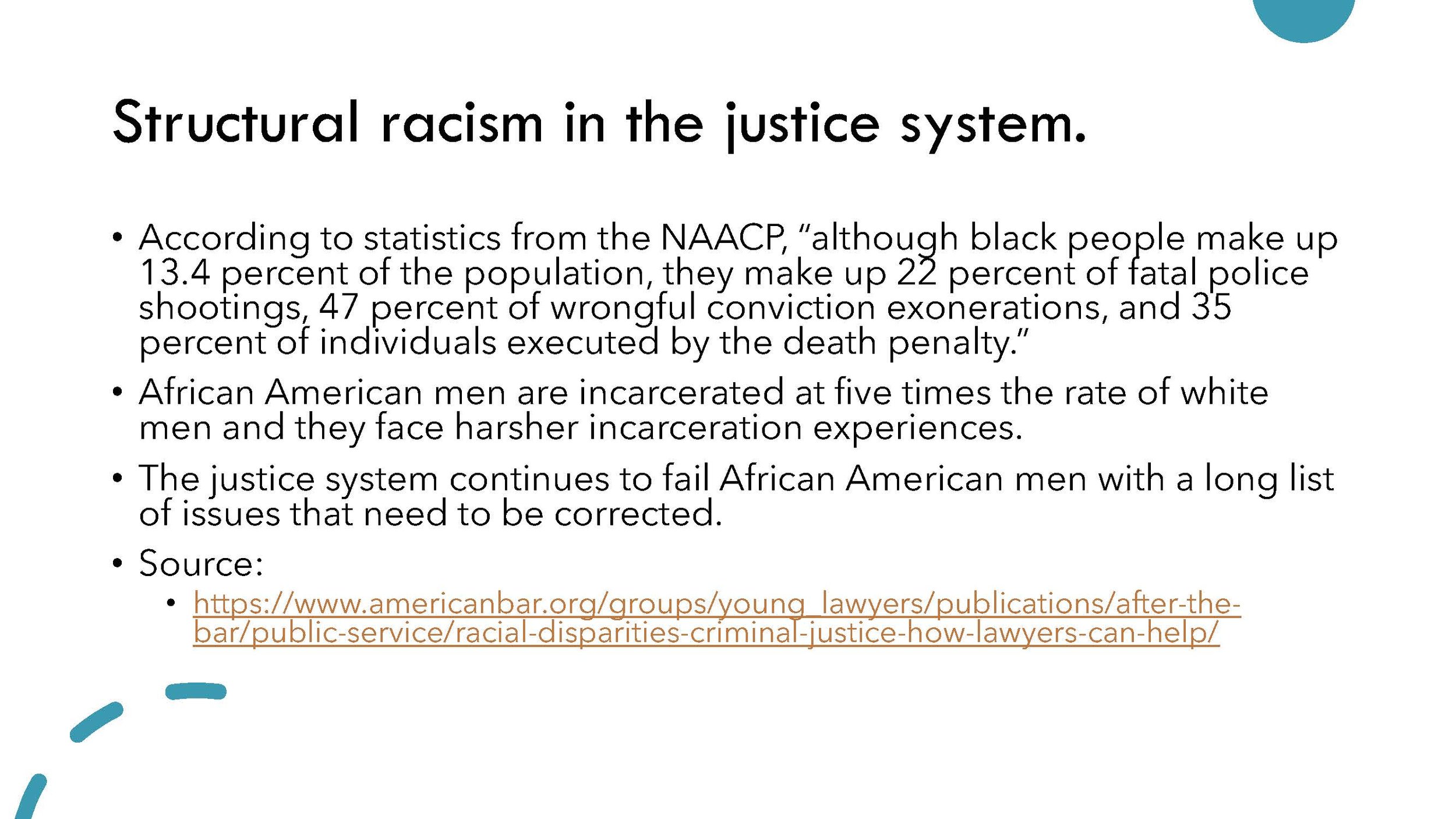
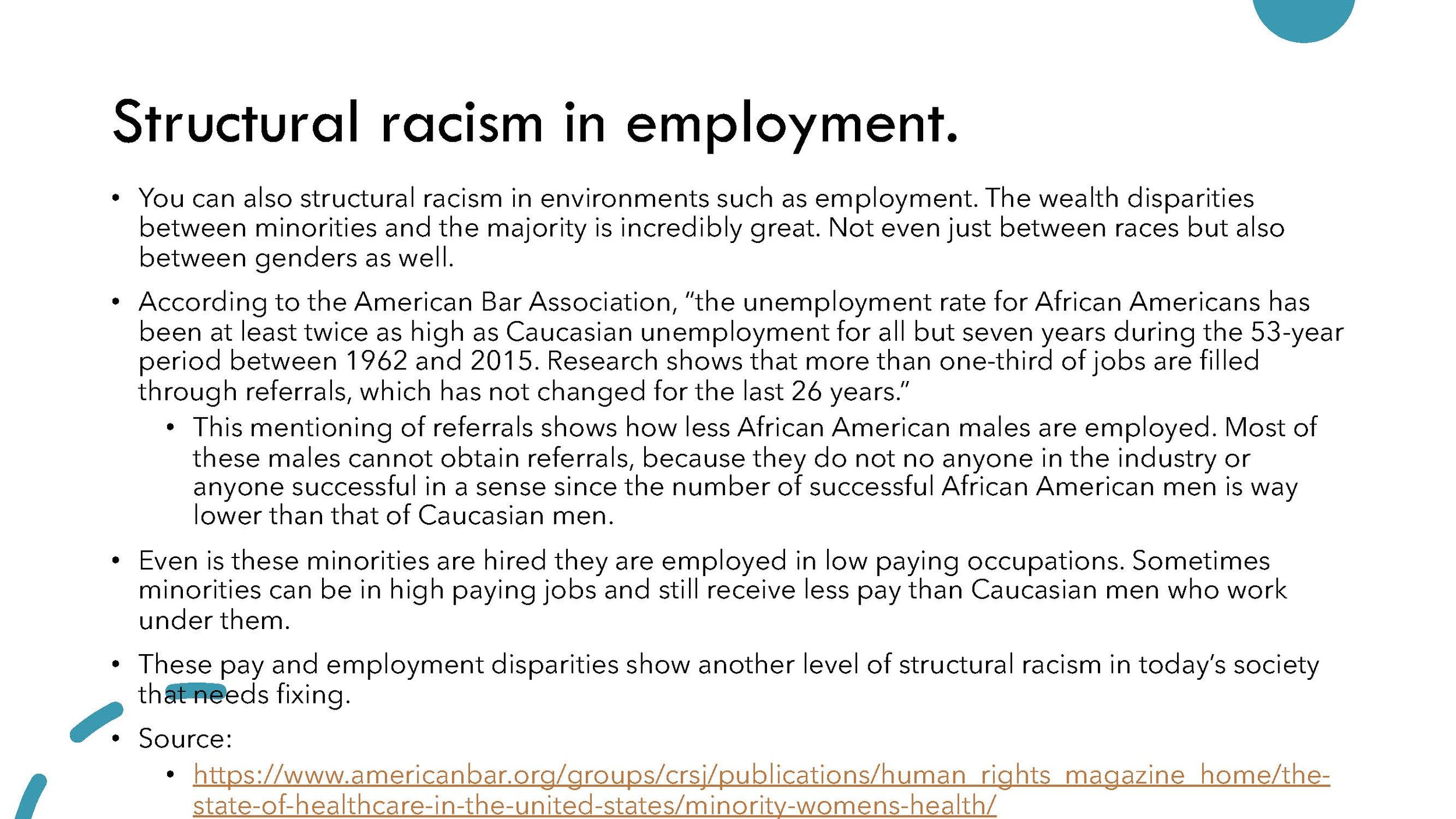

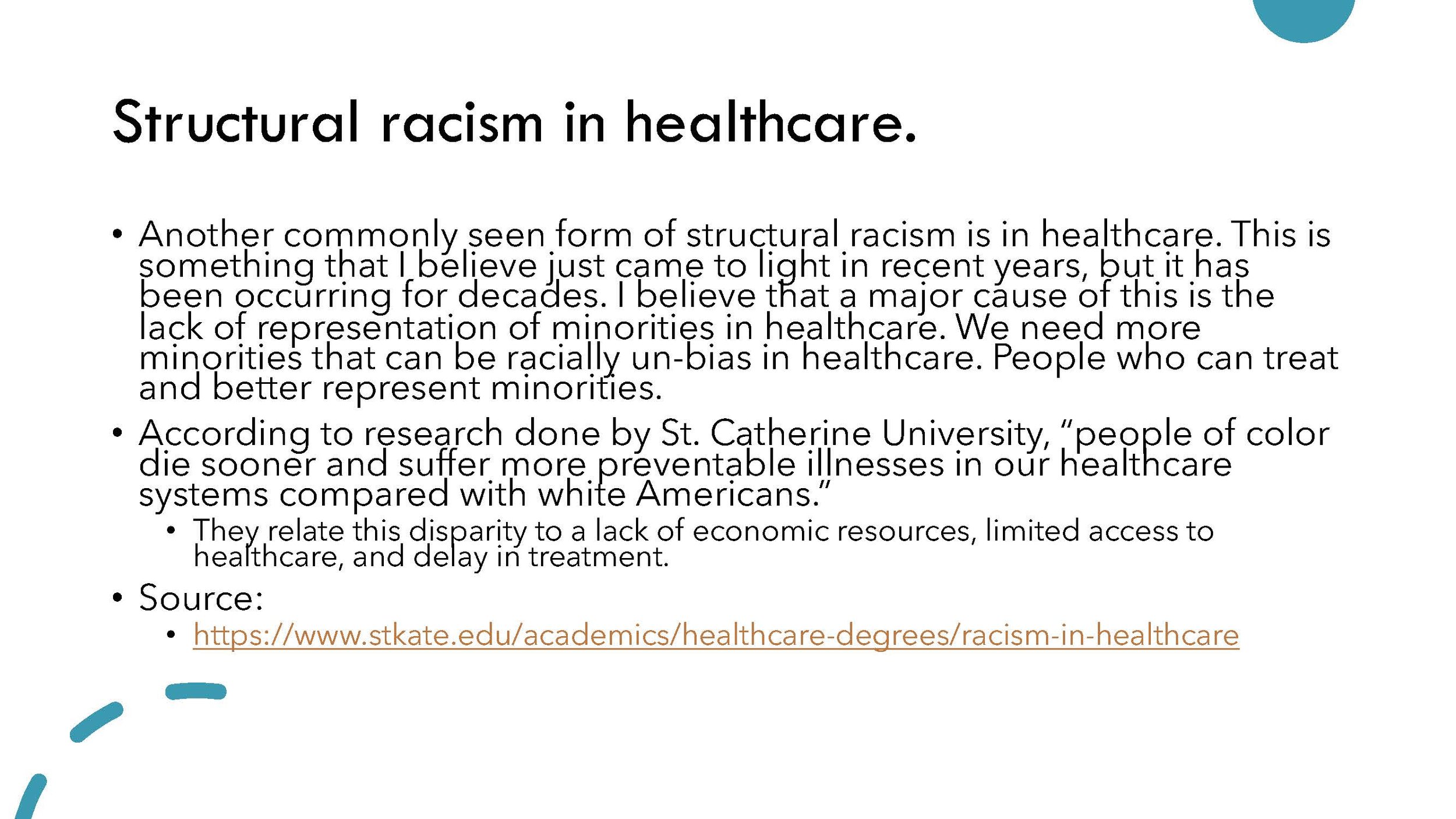
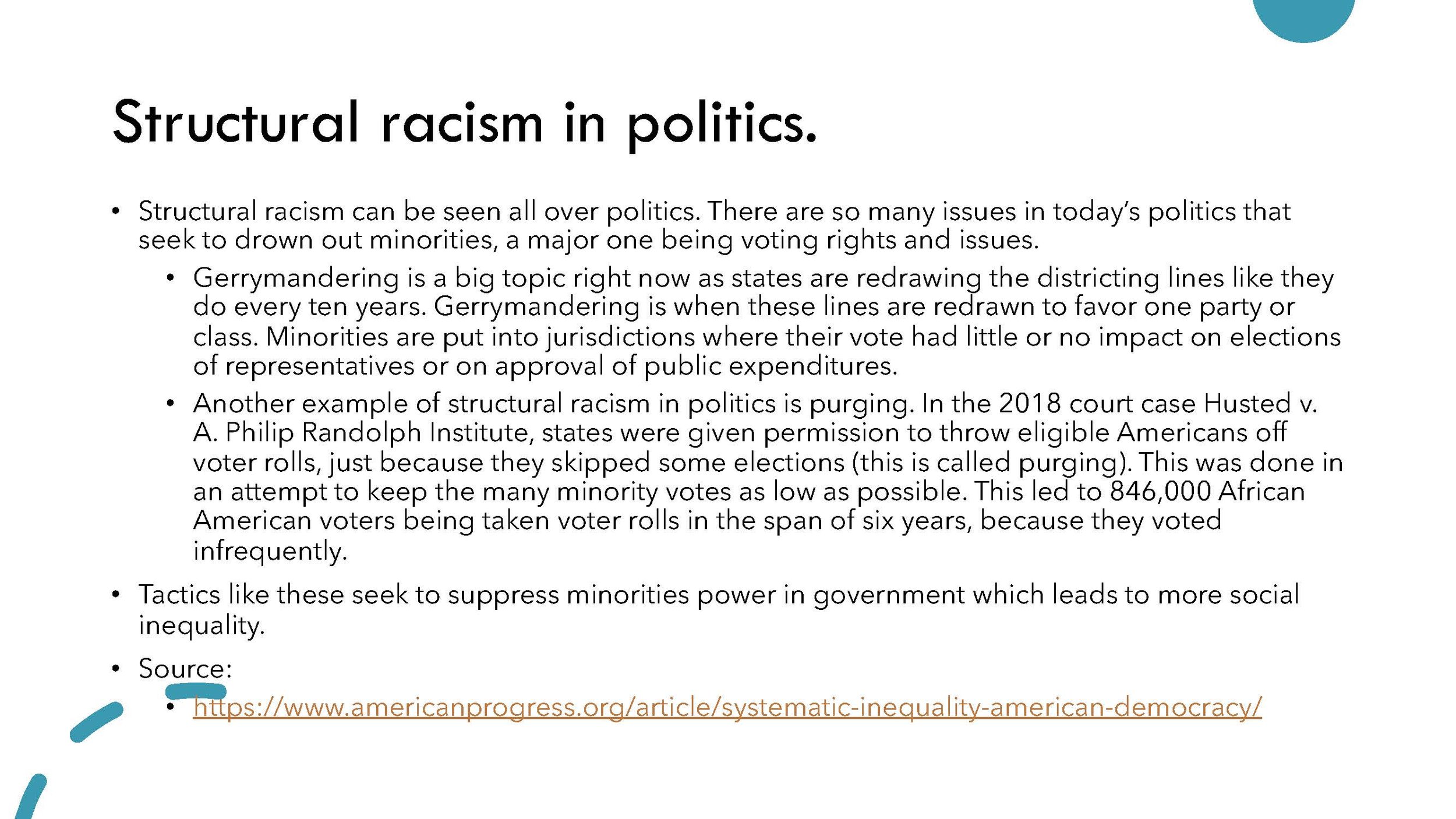
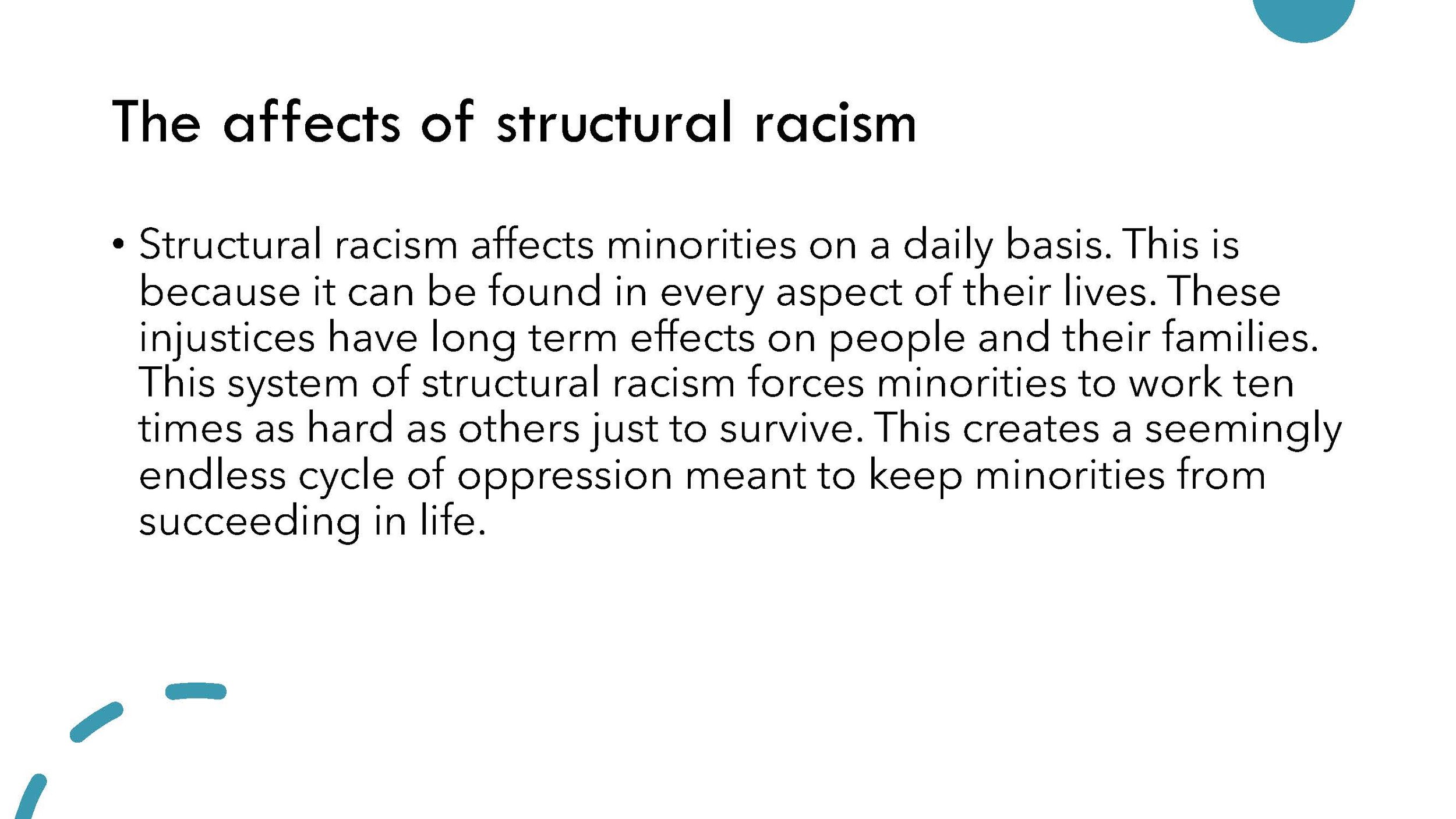
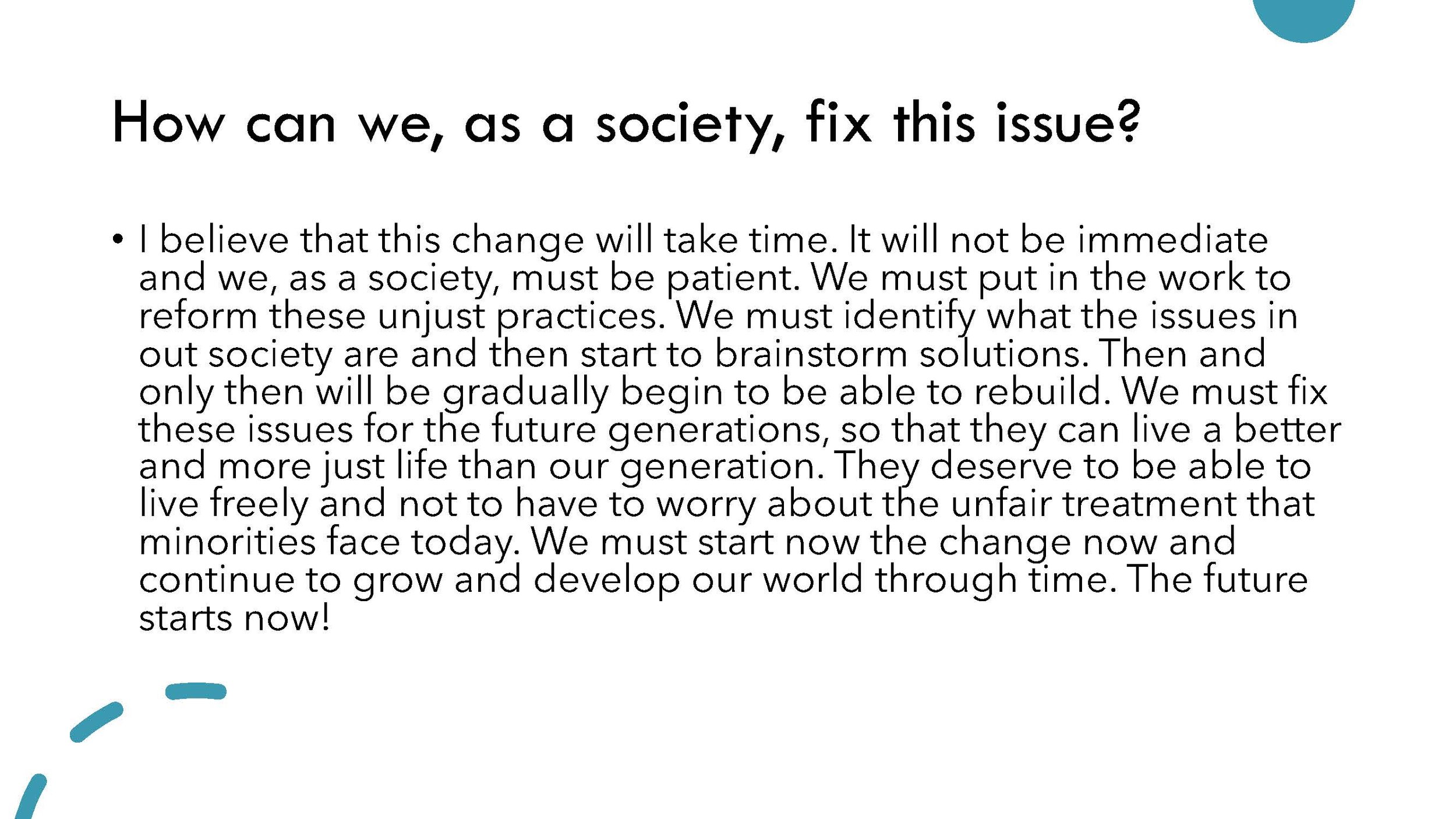
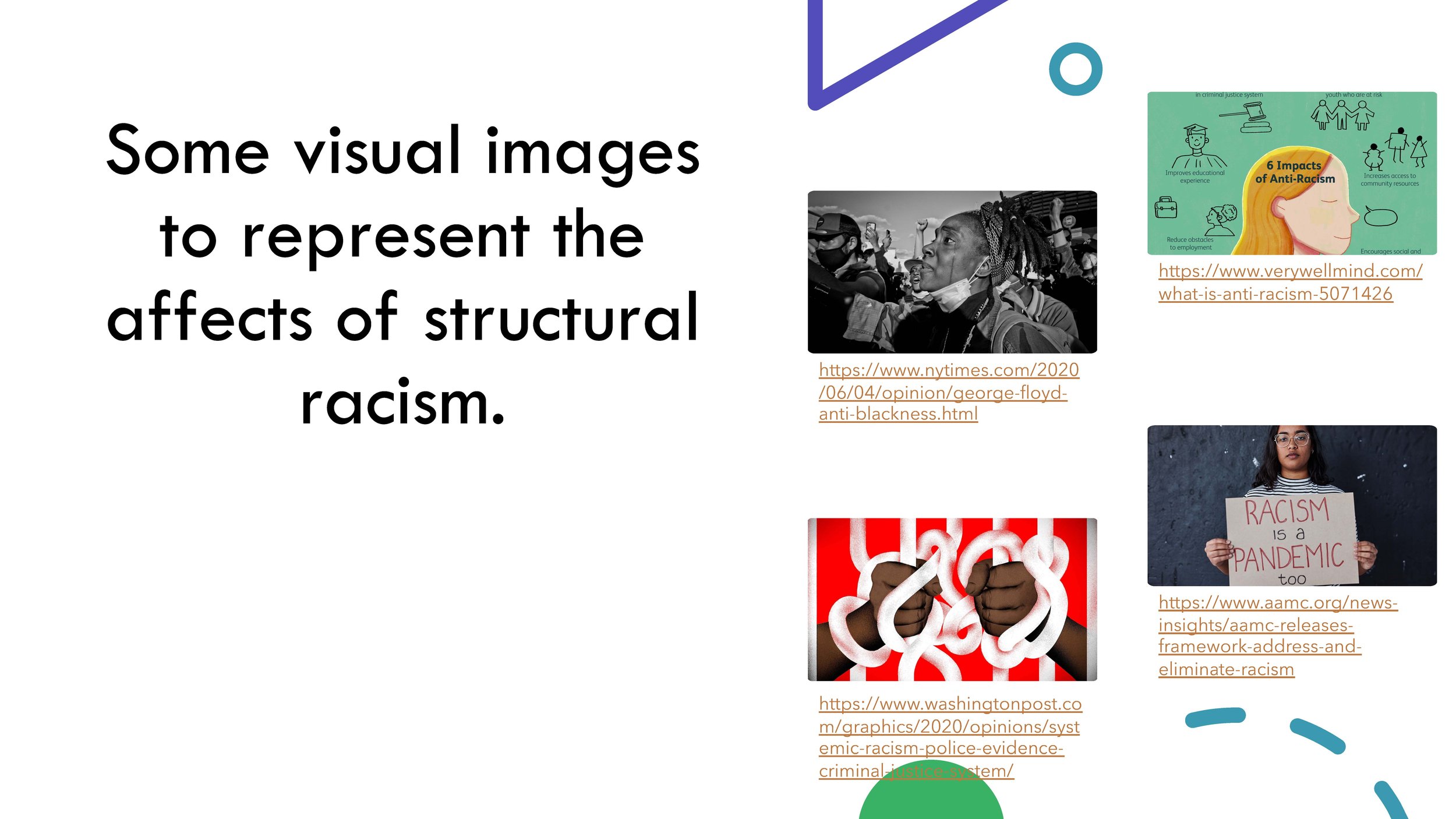
Tione Davenport
Tione’s presentation addresses structural racism and the myriad of ways it is experienced in daily life.
Kindville: A Narrative Poem with Staging for Multiple Voices
Anna Grace Lafaye and Eva Mitchener
Our team explored pluralistic ignorance and the bystander effect through a first-person plural narrative poem for the stage set in a southern elementary school. Through multiple voices, the inherent dangers of hidden power are explored. Anna Grace wrote the poem and considered staging and casting. Eva read the text for content, structure, and artistic connections. Through discussions, cultural and artistic, Eva and Anna Grace explored ways to represent indoctrination related to racism through child-centered educational materials. Eva created a prototype from clay that illustrates events in the poem.

